Book Summaries
English History
Biography
Legends
Adapted Literature
Historical Fiction
European Middle Ages
English History
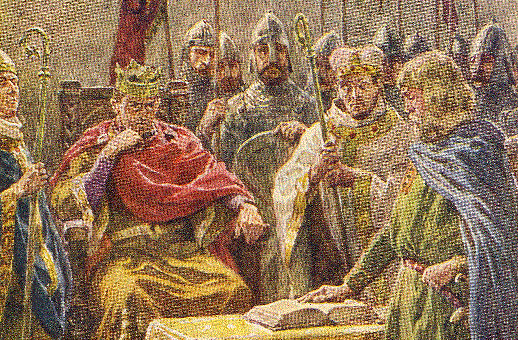
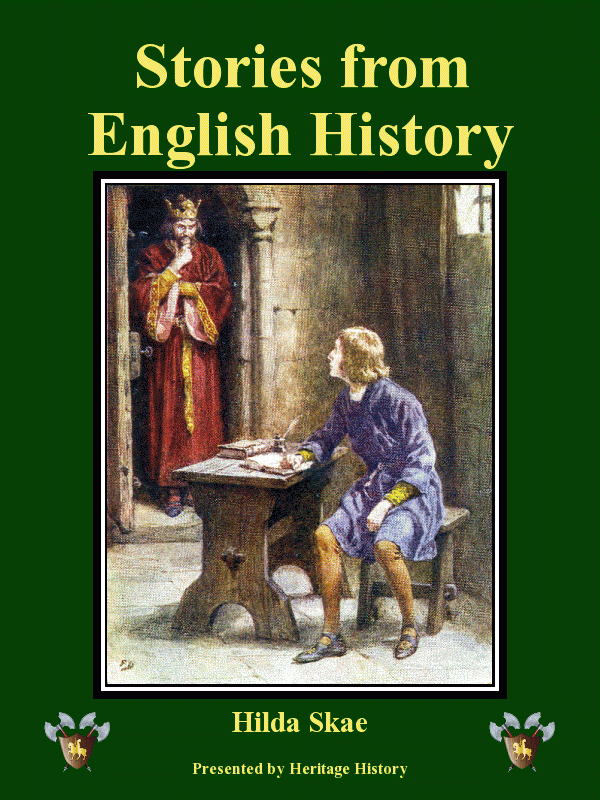 |
Stories from English History by Hilda Skae
This book recounts six stories from early English history, written for grammar
school students, beginning with the Celtic hero Caradoc and ending with Sir
Francis Drake. Other tales include the story of Augustine of Kent and the
conversion of the Saxons to Christianity, William the Conqueror and the Battle
of Hastings, King John and the murder of his rival Prince Arthur, and the story
of the Black Prince at Crecy and Poitiers. [39 sheets]
|
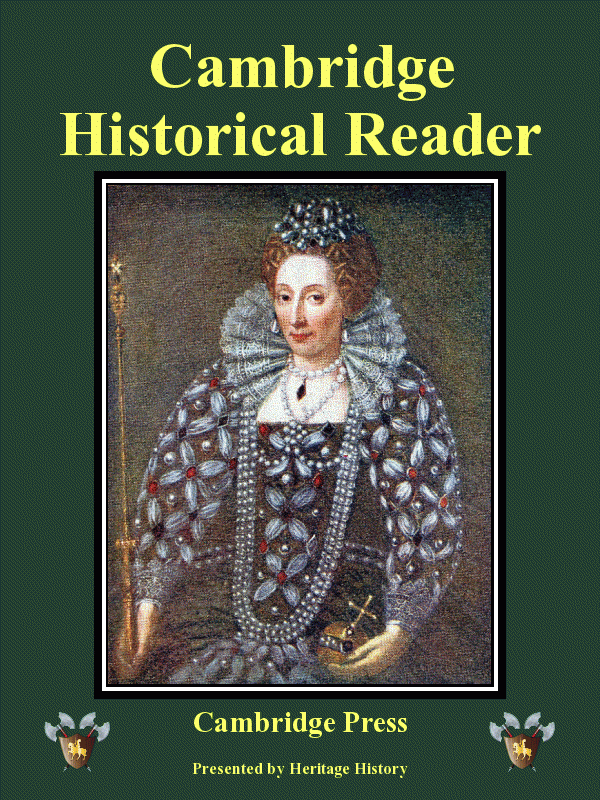 |
Historical Reader: Vol I. by Cambridge Press
This richly illustrated grammar school introduction to British history covers many of the
most important characters and incidents of British history.
It covers many of the most important and romantic incidents of
English history, from the rebellion of Boadicea to the reign of Queen Victoria,
in a manner that is easily accessible to elementary students. [72 sheets]
|
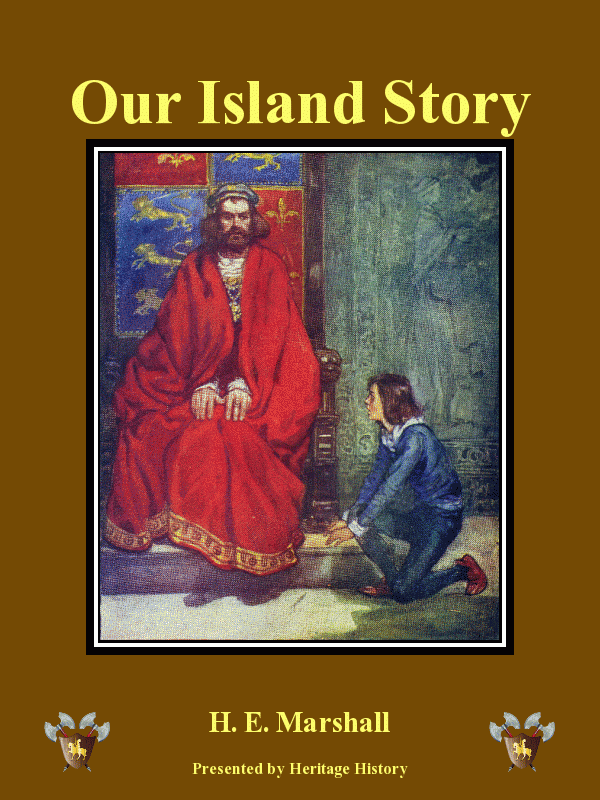 |
Our Island Story by H. E. Marshall
Marshall's storybook of English history is an undeniable classic, popular with
generations of British children. It takes a romantic view of English history,
combining the most well known stories from British history with legends and
folklore. It begins with the legends of Albion and Brutus, and covers Roman
Britain, the British middles ages, and the rise of England through the Stuart
Kings. [230 sheets]
|
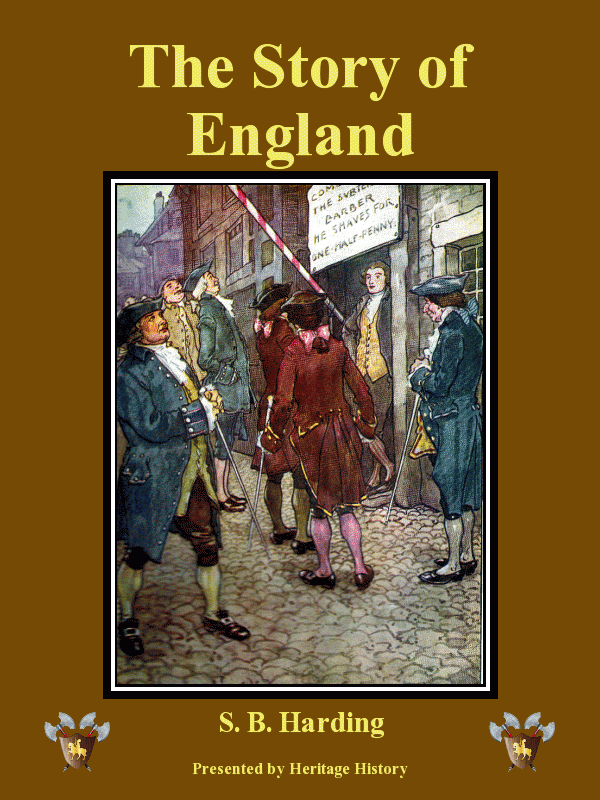 |
Story of England by Samuel B. Harding
Provides a thorough and succinct history of England from the early
Britons to the end of the Victorian era. Besides just a chronological account of
events, a brief explanation of some of the important industrial and social
changes are discussed as well as the difficulties of administering the great
Empire. [170 sheets]
|
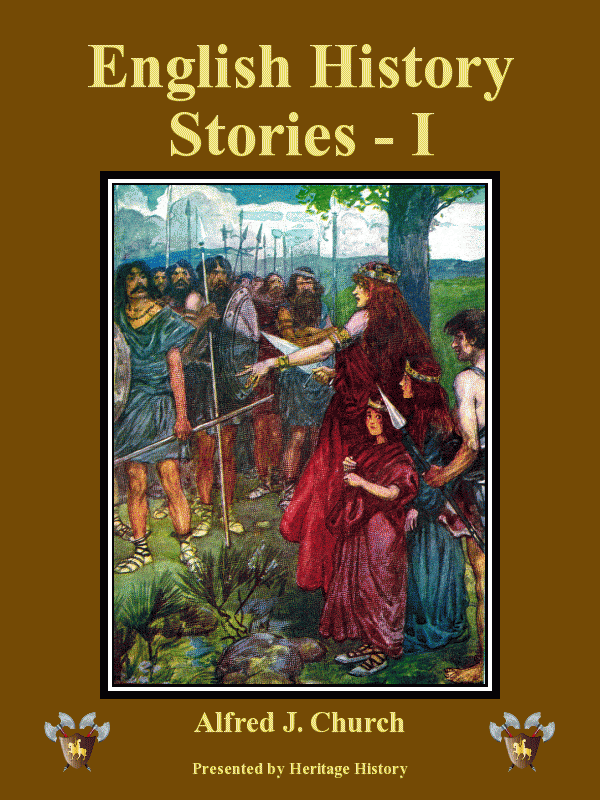 |
Stories from English History: I by Alfred J. Church
This is the first of three volumes of Church's Stories from English
History series. It covers 50 B.C. to 1360 A.D. and includes stories of Caesar
and Boadicea, the coming of the Saxons, Alfred the Great, Canute, Harold,
William the Conqueror and the Norman Conquest, Henry II and Thomas a Becket,
Richard I the Crusader, the Magna Carta, Bannockburn, the battles of Crécy,
Calias, Poitiers and others. [77 sheets]
|
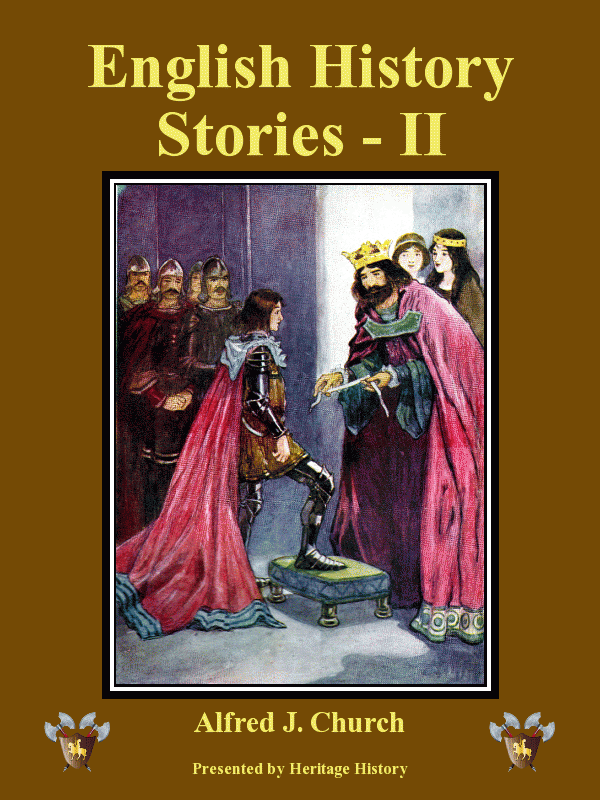 |
Stories from English History: II by Alfred J. Church
This is the second volume of Church's Stories from English History
series. It covers 1360 to 1647 A.D. and includes stories of Wat Tyler’s
Rebellion, Agincourt, the War of the Roses, William Caxton, St. Thomas More,
Queens Mary and Elizabeth, Raleigh, Drake and the Great Armada, James I, Charles
I, the English Civil War, and others. [67 sheets]
|
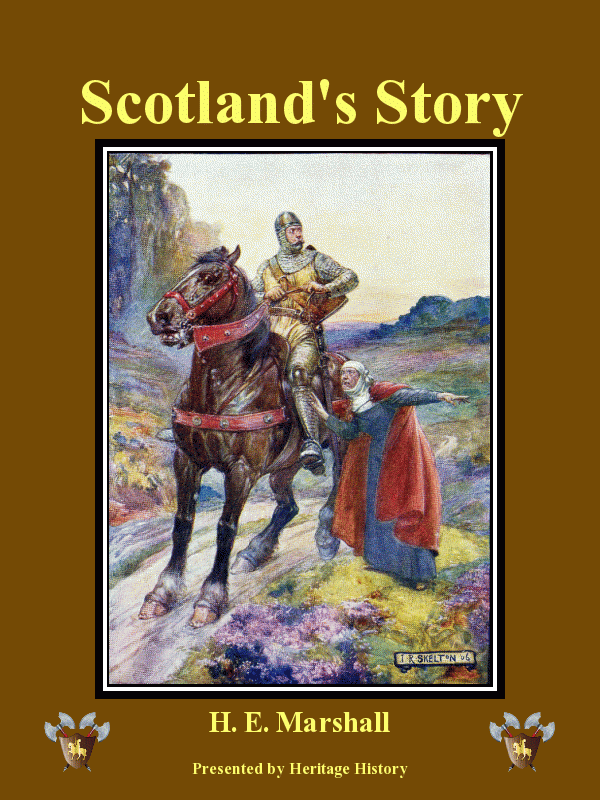 |
Scotland's Story by H. E. Marshall
A child's history of Scotland, from legendary days through the time when the
kingdoms of Scotland and England were joined together. Relates in vigorous prose
the thrilling exploits of the heroes and heroines who defended Scotland from its
English invaders. Includes the stories of Macbeth, William Wallace and Robert
the Bruce, Mary Queen of Scots, the poet king and the beautiful lady of the
garden, the Glen of Weeping and many others. [186 sheets]
|
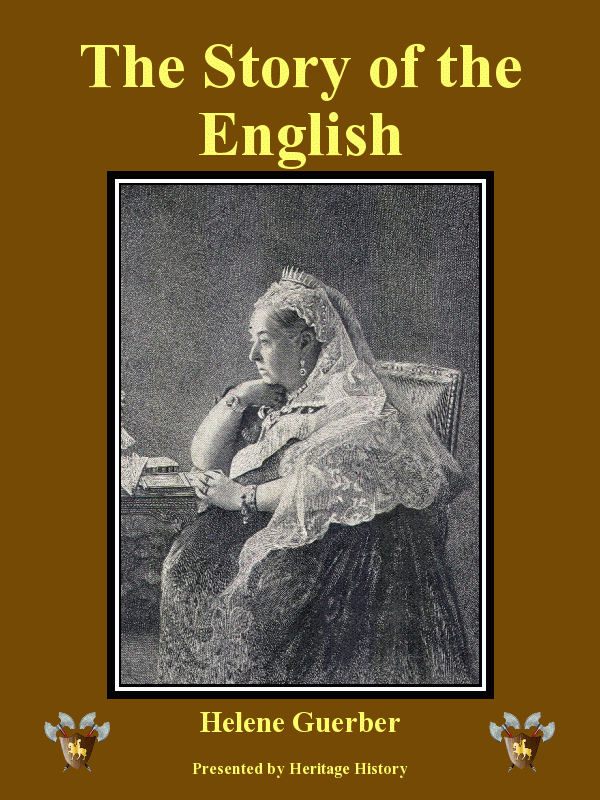 |
The Story of the English by Helene Guerber
Middle school level introduction to British history, from the age of the Celts
and Druids to the Victorian Age. Many of the most romantic stories from English
history are recounted in simple terms for school aged children. Includes a great
many famous anecdotes and legends from English history. Stories about Arthur,
Alfred, Canute, Lady Godiva, William the Conqueror, Thomas Becket, Richard Coeur
d' Leon, and many others English heroes are featured. [145 sheets]
|
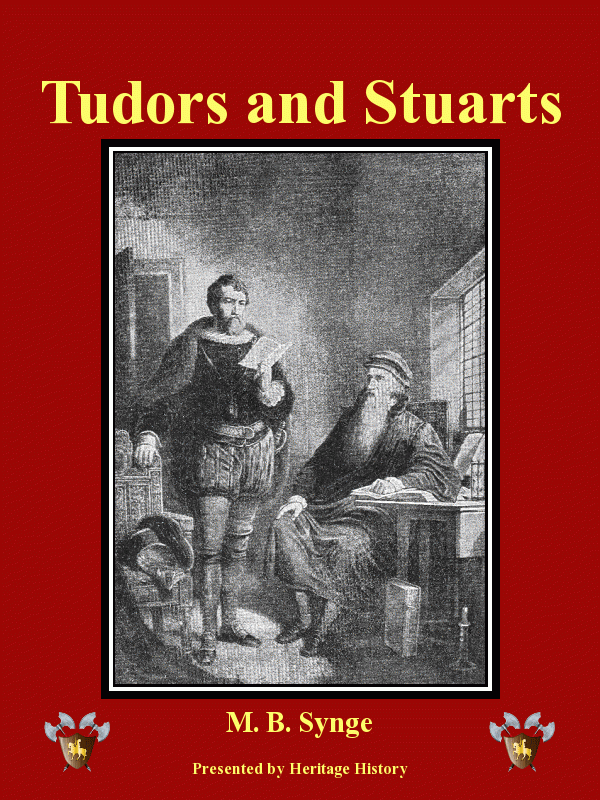 |
The Tudors and Stuarts by M. B. Synge
This book presents an excellent intermediate level history of 16th and 17th
century England. The Tudor section provides details of how the reformation came
about, including the closing of the monasteries and widespread religious
persecutions. The Stuart section explains the rising conflict between parliament
and the monarchy, the relationship between religious and political freedom, and
the rise of political parties and religious toleration. [120 sheets]
|
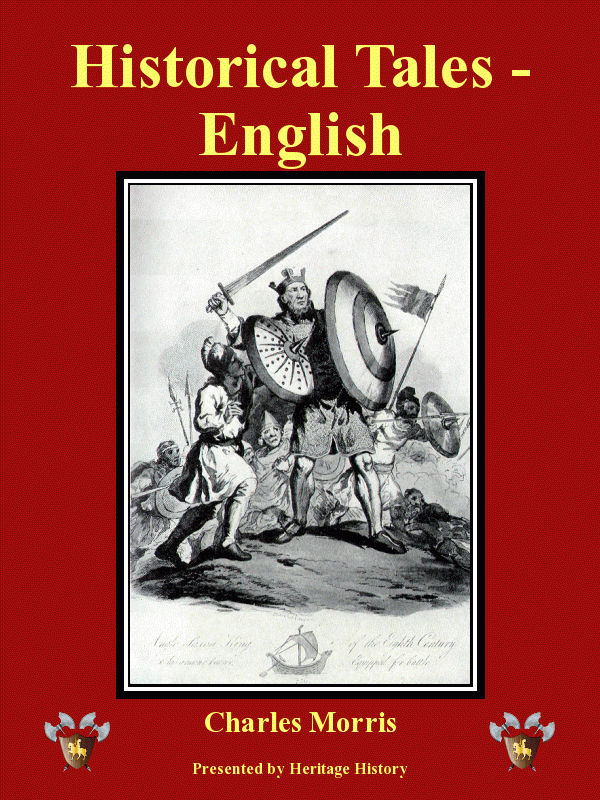 |
English Tales by Charles Morris
This selection of stories from English history includes many well known
episodes, but also a variety of lesser known, but romantic events. Morris is an
excellent writer and his stories are told with a dramatic flair at a level of
detail of interest to an older student or adult already familiar with basic
English History. Although there are many familiar heroes, a good number are less
well known, such as Elfrida, Hereward, Arabella Stuart, and Prince Charles. [142 sheets]
|
Biography
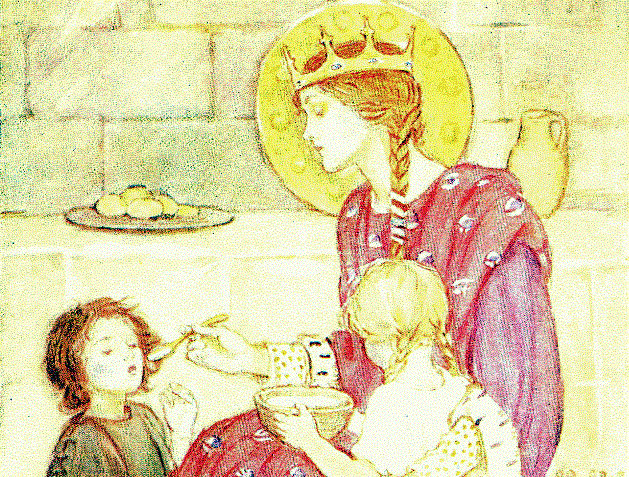
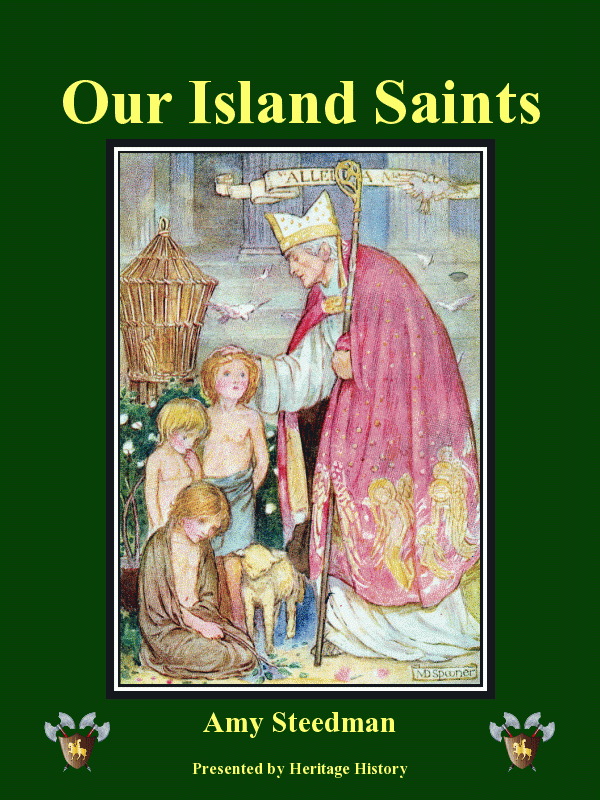 |
Our Island Saints by Amy Steedman
Stories of gentle saints who lived their lives of service in the British Isles
during the Middle Ages. Includes tales of St. Alban, St. Patrick, St. Bridget, St.
Cuthbert, St. Columba, St. Margaret of Scotland, and others. [75 sheets]
|
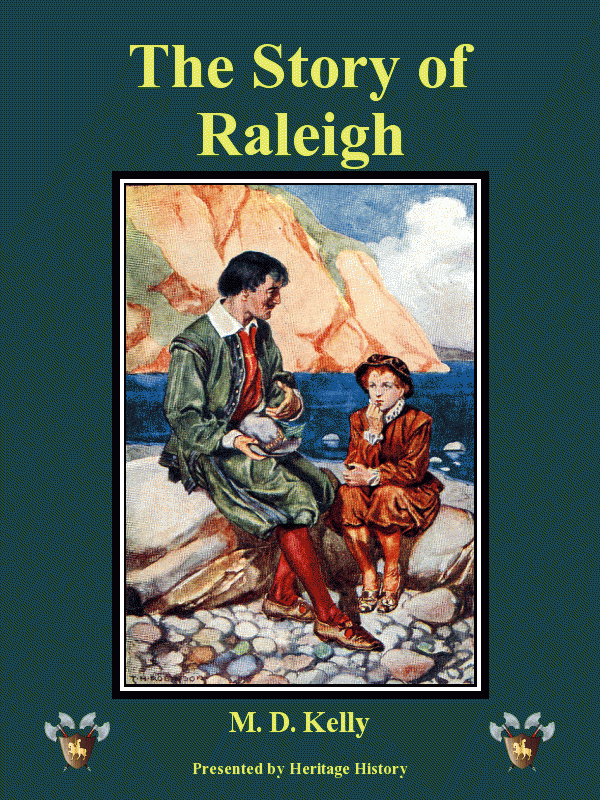 |
The Story of Raleigh by Margaret Duncan Kelly
Sir Walter Raleigh was one of the most famous courtiers of Queen Elizabeth. He
is best known for his efforts to establish an English colonies in the New World,
first in Newfoundland, then at Jamestown in Virginia. Raleigh was also a
literary figure. He introduced Edmund Spenser (of Faerie Queen Fame), to
Elizabeth's court, and wrote several books himself during his long imprisonment
under King James I. [36 sheets]
|
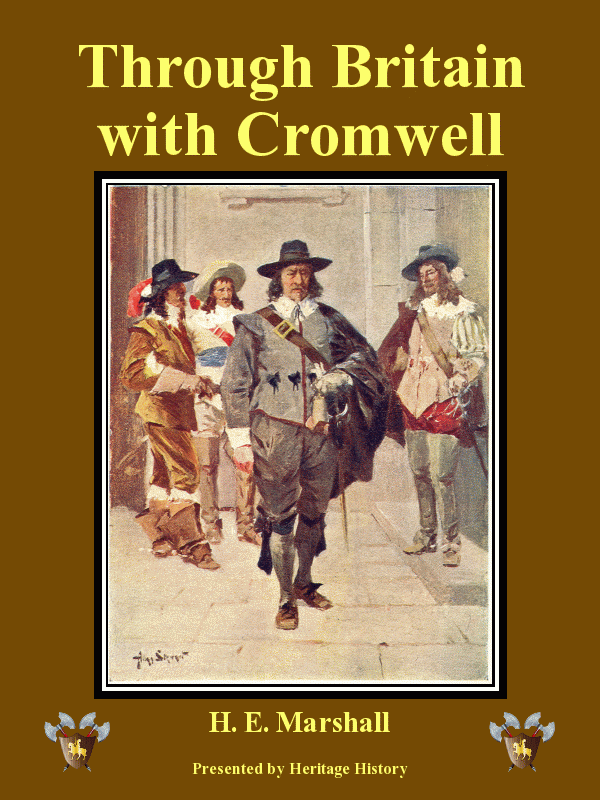 |
Through Britain With Cromwell by H. E. Marshall
This biography of Cromwell was written with geography in mind. During the
English Civil War Cromwell fought battles all over England, Scotland, Wales and
Ireland so the author uses the story of his life to inspire interest in the
landmarks of the British Isles. The fascinating story of Cromwell's life is not
hindered, but rather enhanced by the special attention to environment, and
numerous maps. [58 sheets]
|
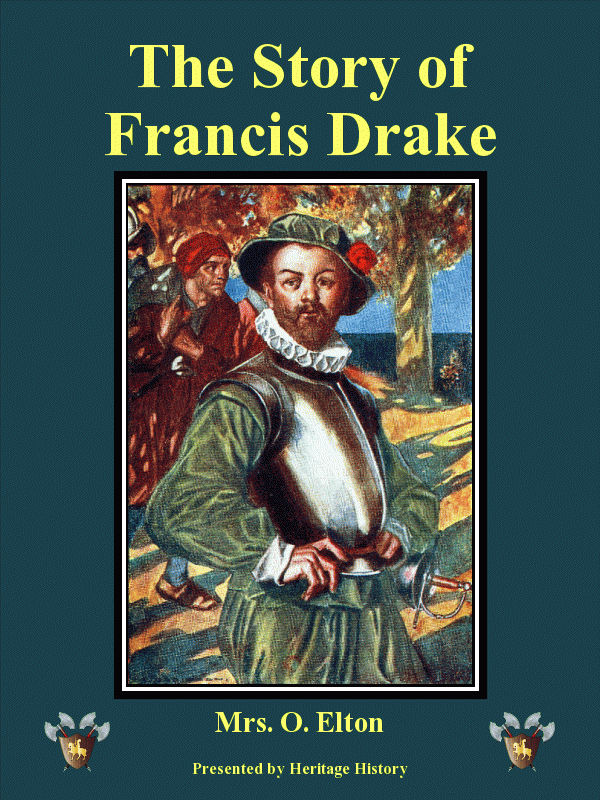 |
The Story of Francis Drake by Mrs. Oliver Elton
Sir Francis Drake was one of the most colorful characters in Elizabethan
England. He was a sworn enemy of the Spanish and spent many years plundering
their ships and towns in the new world, both to enrich himself and to strike a
blow at England's most threatening enemy. He was only the second European, after
Magellan, to pass Cape Horn in South America and sail around the world, but it
is his daring feats and audacious exploits against Spain for which he is best
known. [37 sheets]
|
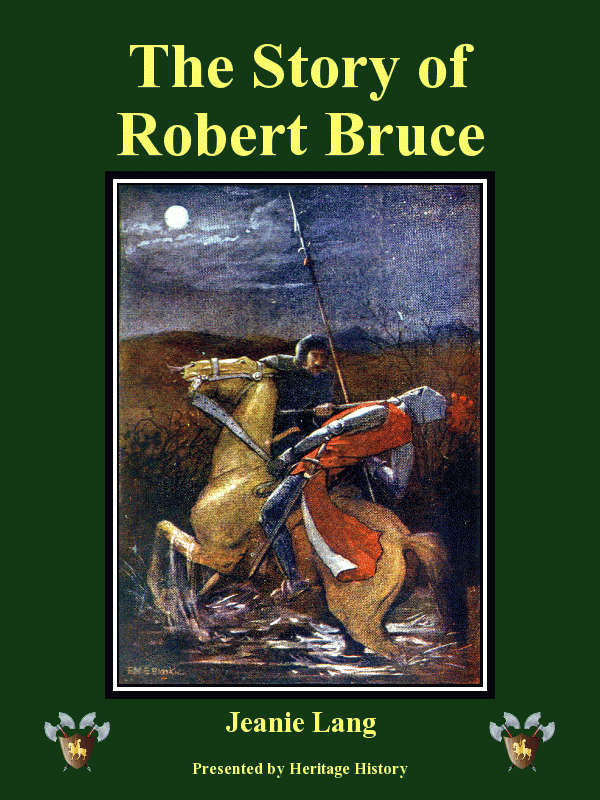 |
The Story of Robert Bruce by Jeanie Lang
This story of Robert Bruce, hero of Scotland, is an action packed tale of one of
the greatest patriotic heroes of Scotland. Deprived of his crown by Edward I. of
England, who had completely subjugated Scotland by the time he came of age, he
won back Scotland's independence against terrific odds. With lots of
hand-to-hand combat, treachery, and larger-than-life action, the story of
Robert the Bruce is one of the greatest adventure-dramas in English history.
[44 sheets]
|
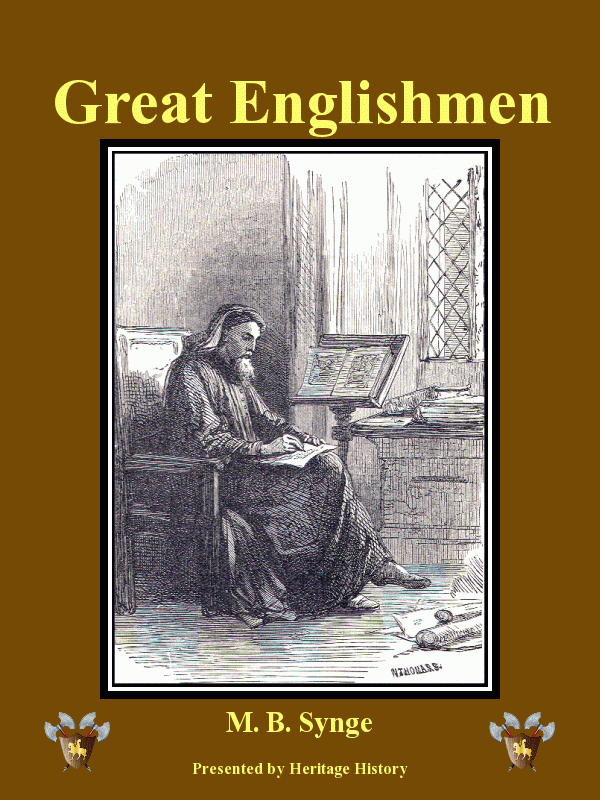 |
Great Englishmen by M. B. Synge
Sixteen short biographies of eminent Englishmen are given. Although there are
many important men of action portrayed in this volume, including Nelson, Alfred
the Great, Clive, and the Black Prince, many men whose accomplishments were in
the realm of culture are given also. Some of these include the Venerable Bede,
Milton, Isaac Newton, William Caxton, George Stephenson, and others. [63 sheets]
|
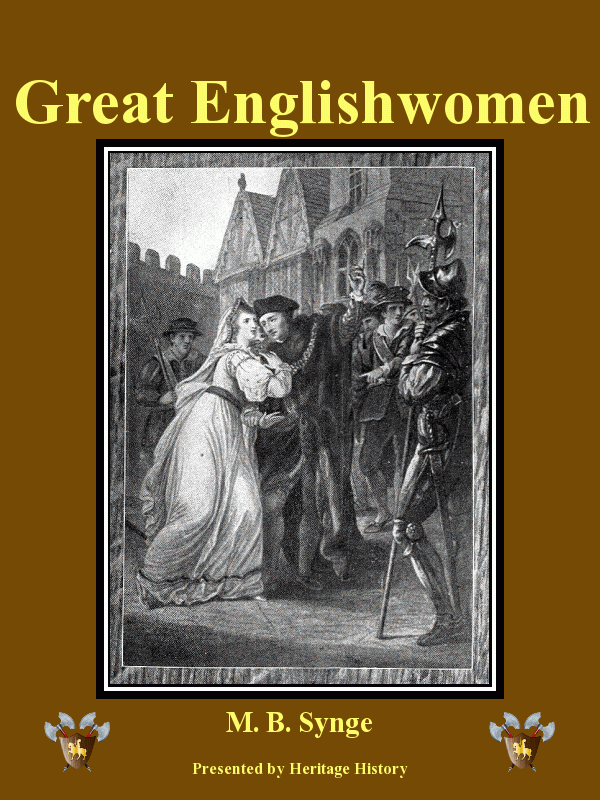 |
Great Englishwomen by M. B. Synge
Sixteen short biographies of eminent, but not overly famous Englishwomen are
given. Included are several queens, but also a variety of women accomplished in
cultural or professional fields, including Angelica Kaufman (an artist), Mary
Somerville (a scientist), and Elizabeth Fry (a prison reformer), and many
others. [52 sheets]
|
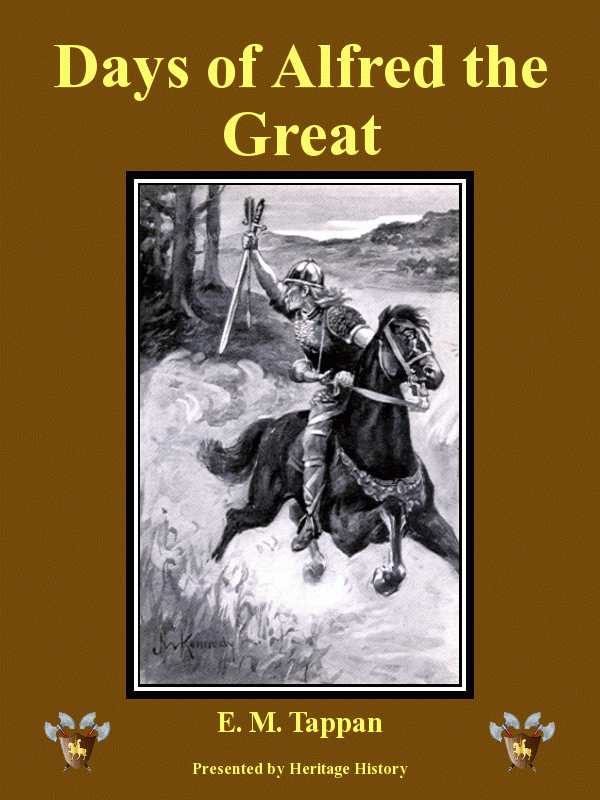 |
In the Days of Alfred the Great by Eva March Tappan
The story of the life of Alfred the Great, is presented in a manner that is of
great interest to younger students. The book places great emphasis on the
childhood of Alfred, and tells how at twenty-two he inherited a land overrun by
savage pirates,—a restless ignorant, defenseless land. After spending most of
his youth in conflict with the invaders, the final chapters tell how he fought
the Danes and restored the country to a condition of peace and safety. [91
sheets]
|
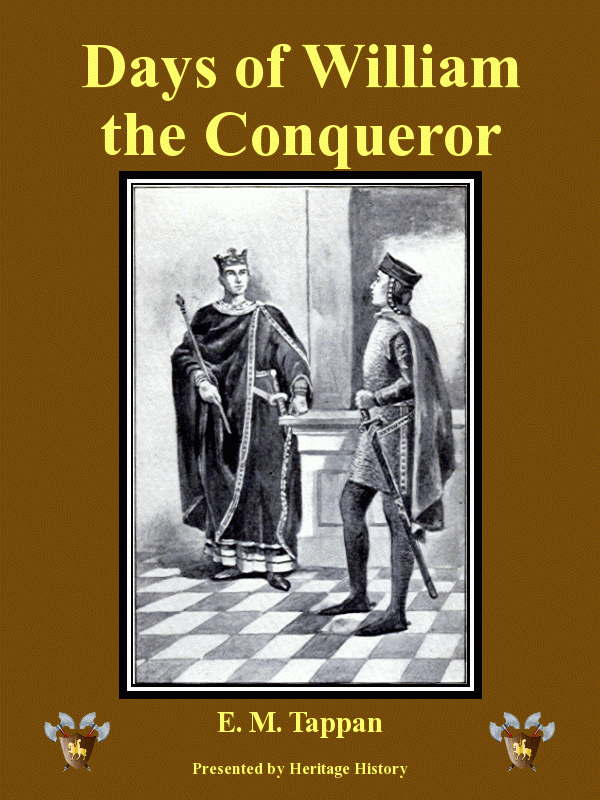 |
In the Days of William the Conqueror by Eva March Tappan
This story of the life of William the Conqueror, telling of his danger-filled boyhood in
Normandy, is written with great flourish in a manner that is
especially appealing to young boys. From his earliest years, his life was one
of adventure and conquest. As a youth he was knighted by the King of France, who
eventually became his worst enemy. Afterward he proved himself the greatest
warrior in all of Europe and completed his victorious career with his daring
conquest of England. [94 sheets]
|
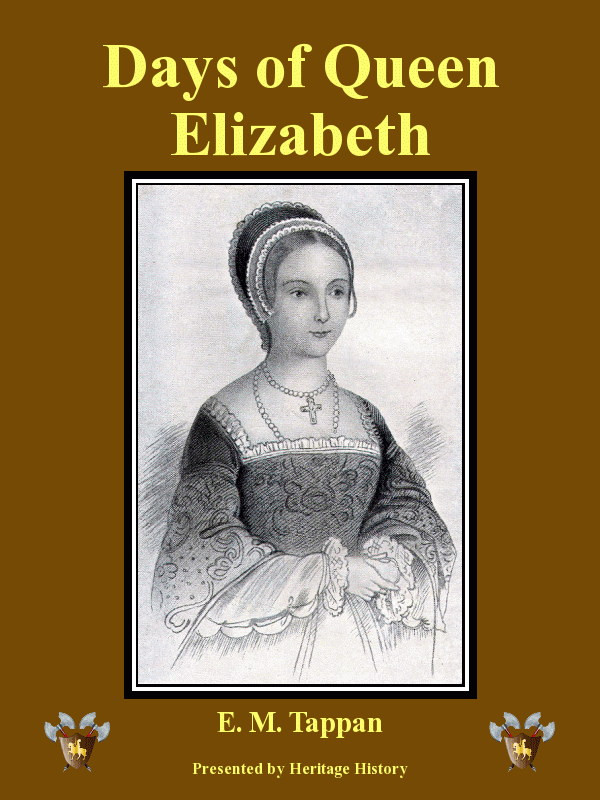 |
In the Days of Queen Elizabeth by Eva March Tappan
This story of the life of Queen Elizabeth, the famous English sovereign who
guided England through the troubled waters of the latter half of the sixteenth
century, was written to appeal to grammar and middle school aged students. A
good deal of attention is paid to the formative, youthful years of princess
Elizabeth, and the later chapters include stories of English voyages of
exploration and the defeat of the Spanish armada. [88 sheets]
|
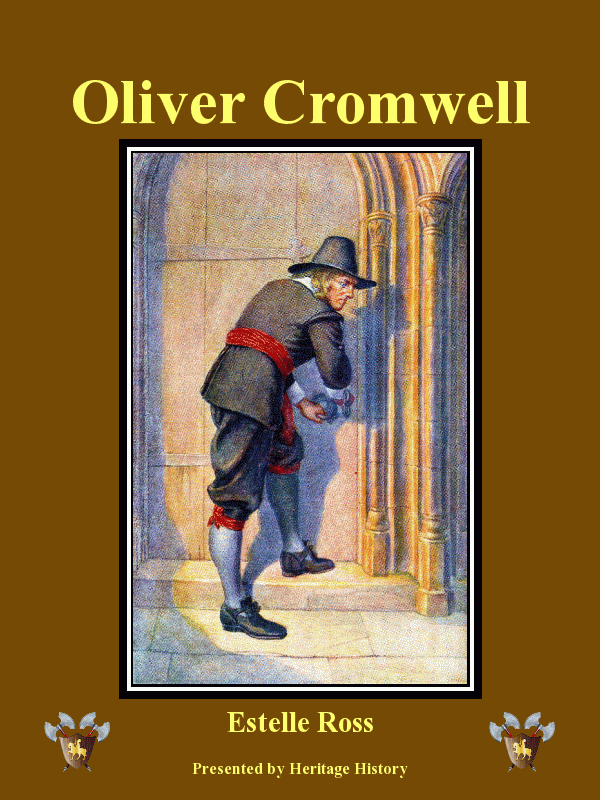 |
Oliver Cromwell by Estelle Ross
This biography of Oliver Cromwell, the fierce puritan general who led the
Roundheads to victory in the English Civil War and formed the Commonwealth
government very ably describes the problems of the age, and Cromwell's role in
permanently transforming the English monarchy. It is an excellent intermediate
biography, suitable for mature middle school or high school students who would
like to better understand this critical period in English history. [68 sheets]
|
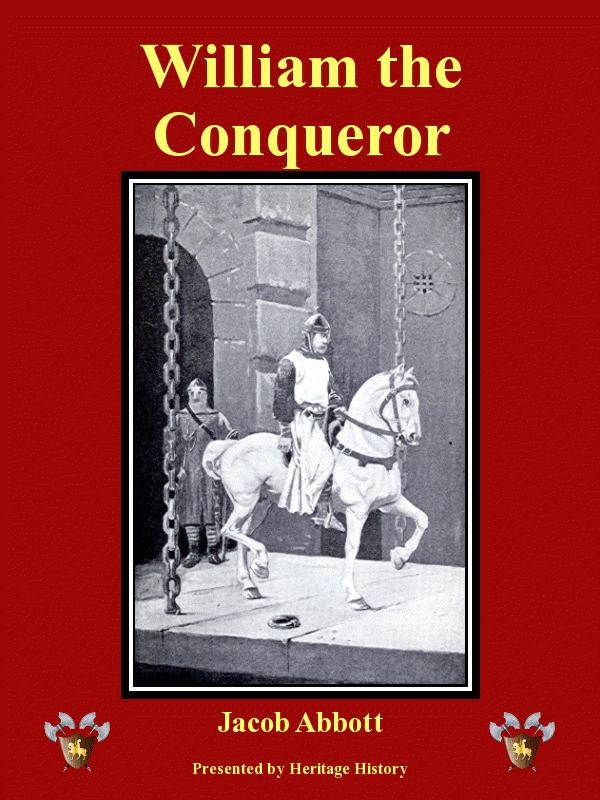 |
William the Conqueror by Jacob Abbott
Even before invading England to claim the throne, William the Conqueror, Duke of
Normandy, was recognized throughout Europe as the greatest warrior of his time.
His entire life was a series of battles and rebellions—in which he was uniformly
successful. He was often hated but always respected by his subjects, and his
iron-fisted policies were more effective in taking charge of the throne of England
than in managing his own family. [80 sheets]
|
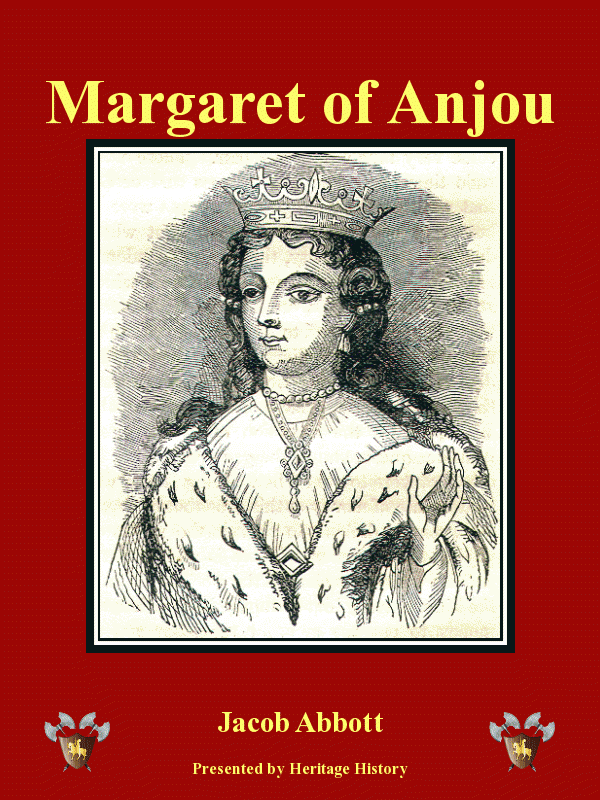 |
Margaret of Anjou by Jacob Abbott
It is hard to understand why Margaret of Anjou, a central character of the War
of the Roses, is not more well known. She was an intelligent, driven, and
fearless woman who essentially ruled England for her husband, Henry VI, during
his reign. This book covers the events leading up to the War of the Roses and
helps to untangle the confusing threads of that confrontation. [91 sheets]
|
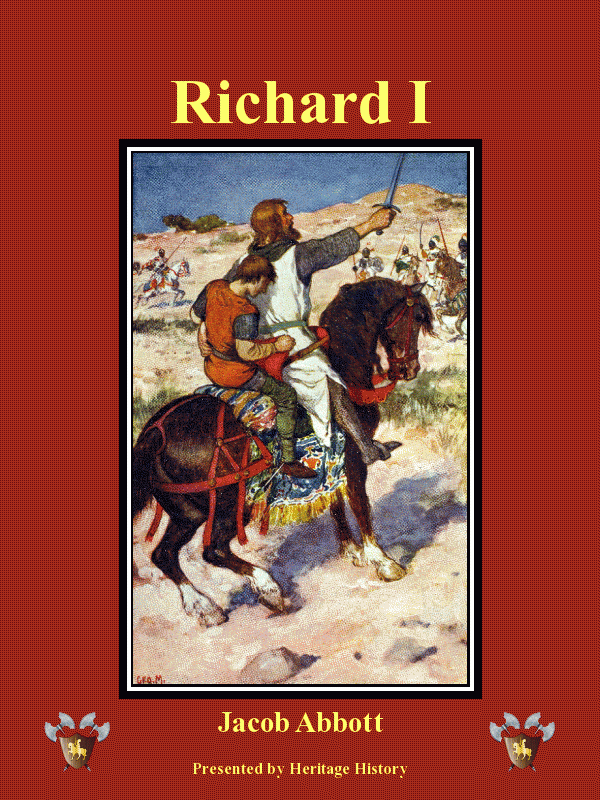 |
Richard I by Jacob Abbott
This story of Richard I begins with his fascinating parents, Eleanor of
Aquitaine and Henry the II, founders of the Plantagenet line of English kings.
Once Richard ascends to the throne the story moves to the Holy Land, scene of
the second Crusade. When Richard arrived in Acre, he found that vastly more
energy was spent in posturing and infighting among the crusaders than in
actually fighting the Mohammedans, but through it all, he managed to maintain a
glamorous appearance of chivalry and apparent victory. [95 sheets]
|
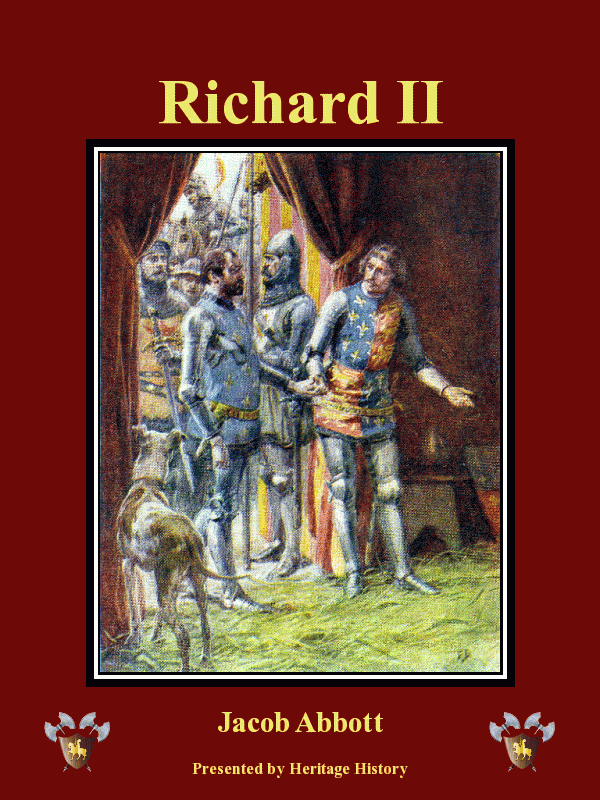 |
Richard II by Jacob Abbott
The first several chapters of Richard II recap the turbulent reigns of
the previous Plantagenet kings including John Lackland and the three Edwards.
Several chapters are then dedicated to the Black Prince, Richard’s father, who
achieved great fame at the battles of Crecy and Poitiers. The reign of Richard
II was most notable for the Wat Tyler rebellion and the fact of that he was
eventually deposed. [100 sheets]
|
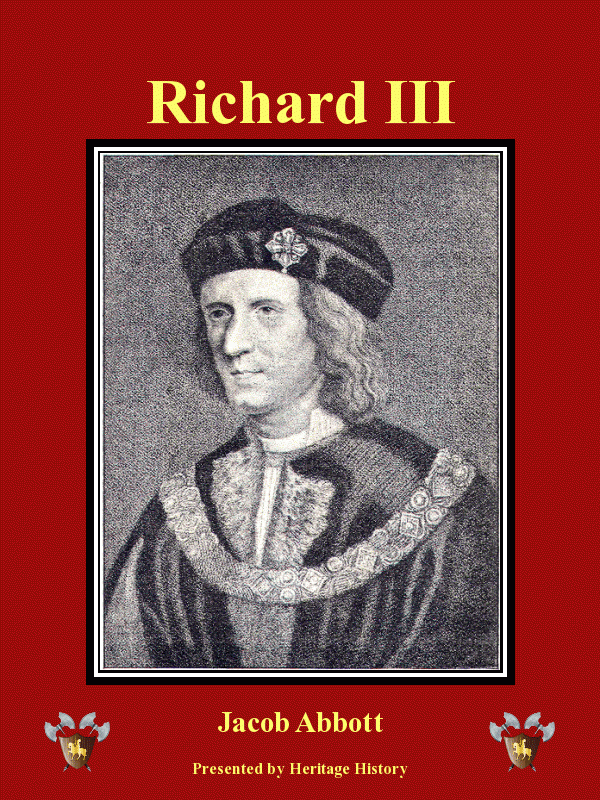 |
Richard III by Jacob Abbott
The War of the Roses did not end with the death of Henry VI and the exile of
Queen Margaret. Although Edward IV eventually gained the throne, the York
family’s struggles were not over. On Edward’s death, Richard III usurped the
throne from Edward’s sons. The book covers the reign of Edward IV, the
usurpation of Richard III, and the eventual triumph of Henry Tudor, which
brought the War of the Roses to a close. [94 sheets]
|
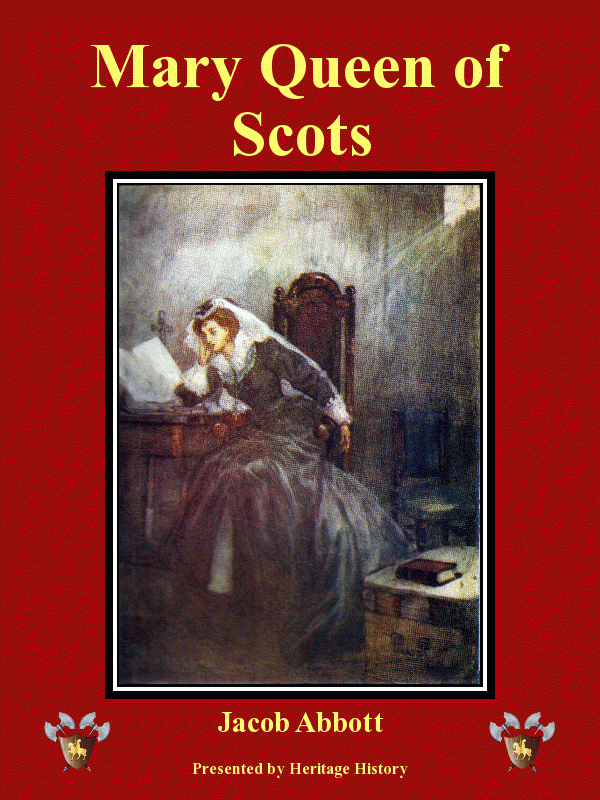 |
Mary Queen of Scots by Jacob Abbott
Mary Queen of Scots was the arch-rival of Queen Elizabeth. As monarch of
Scotland, she too reigned over a kingdom that was torn by struggles between
Catholics and Protestants. However, while Elizabeth was able to maintain power,
Mary lost her throne and ultimately became Elizabeth’s prisoner. Mary was
celebrated for her beauty and gentleness, yet it was precisely her feminine
appeal and unhappy marriages that caused her downfall. [77 sheets]
|
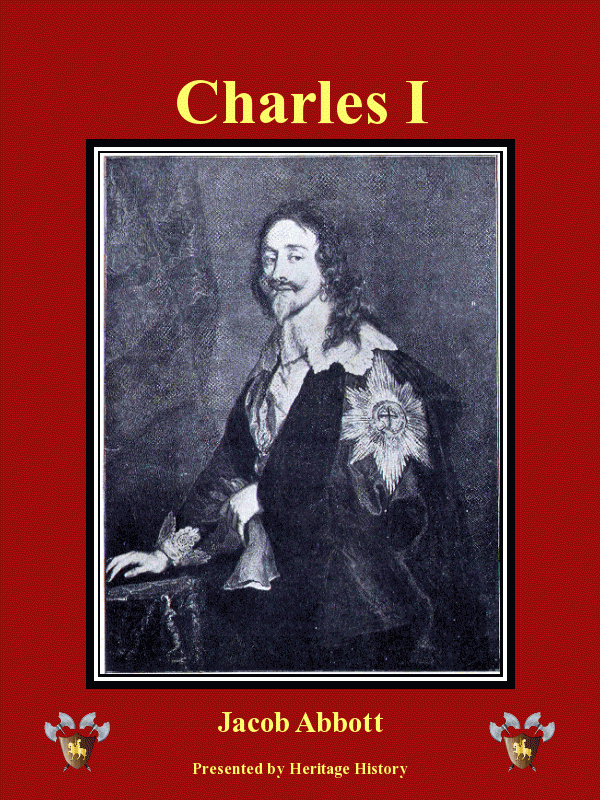 |
Charles I by Jacob Abbott
Charles I had the misfortune to reign during a period when Parliament, mainly
representing the rising merchant class of England, had the temerity to assert
its growing power. His reckless youth was spent carousing with the infamous Duke
of Buckingham, and his mid-years were spent quarreling with parliament. His
misdeeds were no worse than many of his predecessors, but he paid a much heavier
price. After losing a civil war, he spent his last few years in captivity and
was the only English king ever executed. [78 sheets]
|
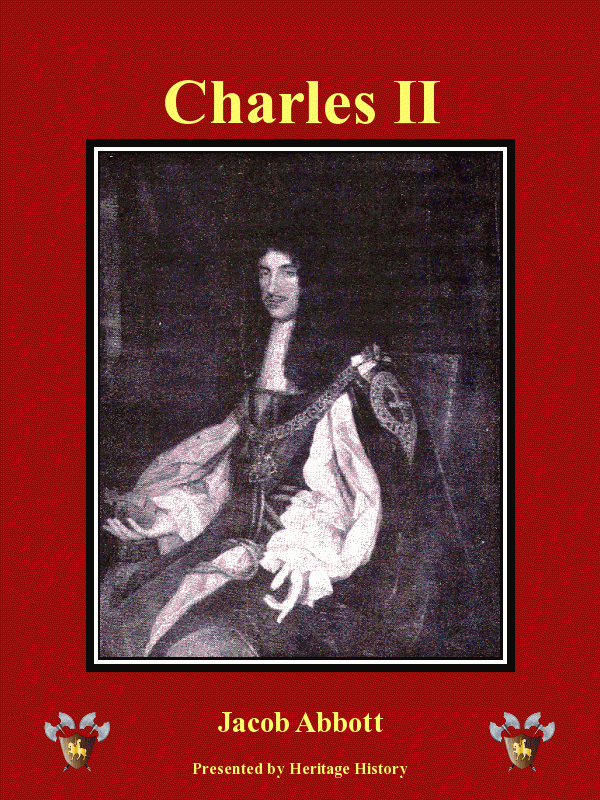 |
Charles II by Jacob Abbott
Charles II’s youth was spent in exile in France, while his father was kept in
captivity by Parliament. Though he nominally became King of England at his
father’s death, he was prevented from assuming the throne until the death of
Cromwell. His story covers some highlights of the Commonwealth, including his
dramatic escape from Cromwell’s army and complicated power shuffling between
Parliament, the army, and various Royalist factions. Some lowlights of his
actual reign include the Great Plague, the Fire of London, and the Dutch
invasion. [83 sheets]
|
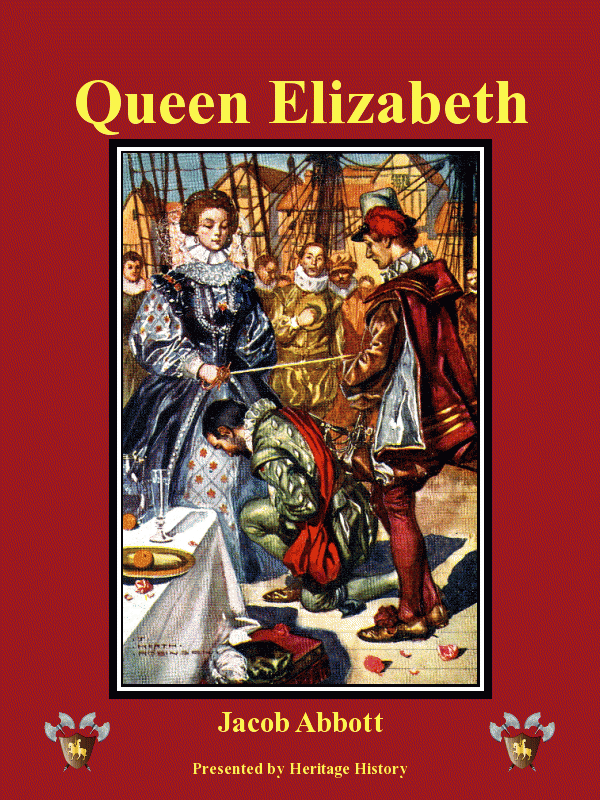 |
Queen Elizabeth by Jacob Abbott
The life of Elizabeth encompassed the turbulent reigns of her brother Edward VI and
sister Mary as well as her own reign of nearly 45 years. She ascended to the throne
amid great controversy between Catholics and Protestants, yet she successfully
navigated through these treacherous times and achieved a great deal of stability
and prosperity for England. Her reign was populated with very colorful
characters including Drake, Raleigh, and the Earl of Leicester. The Spanish
Armada, which occurred late in her reign, was one of the most important battles
in history. [74 sheets]
|
Legends
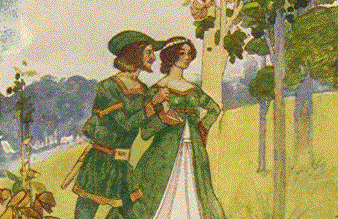
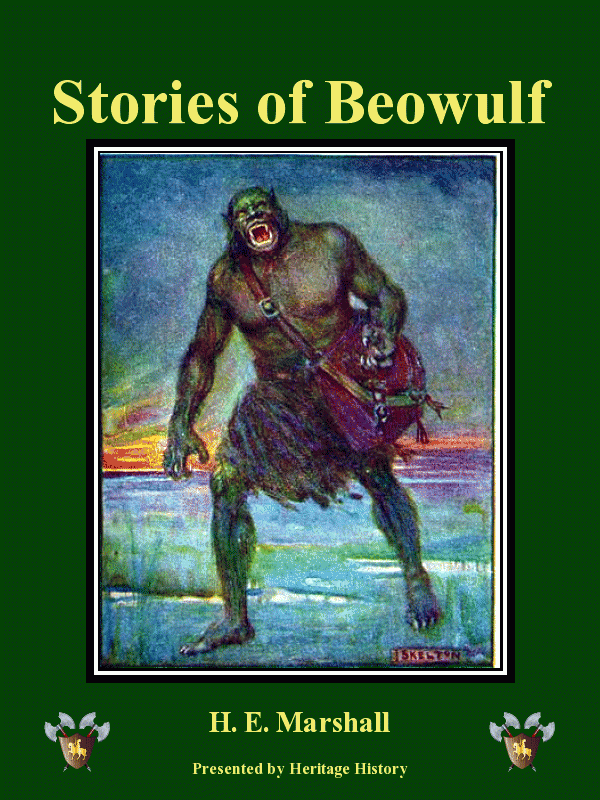 |
Stories of Beowulf by H. E. Marshall
This volume retells the famous Anglo-Saxon saga in the manner of a folktale,
with the heroic qualities emphasized. It relates how Beowulf, the hero of the
Saxons, came to Daneland and how he overcame the ogre Grendel and the
waterwitch. It closes with the story of how the fire dragon warred with the
Goth folk and how Beowulf fought his last fight. [29 sheets]
|
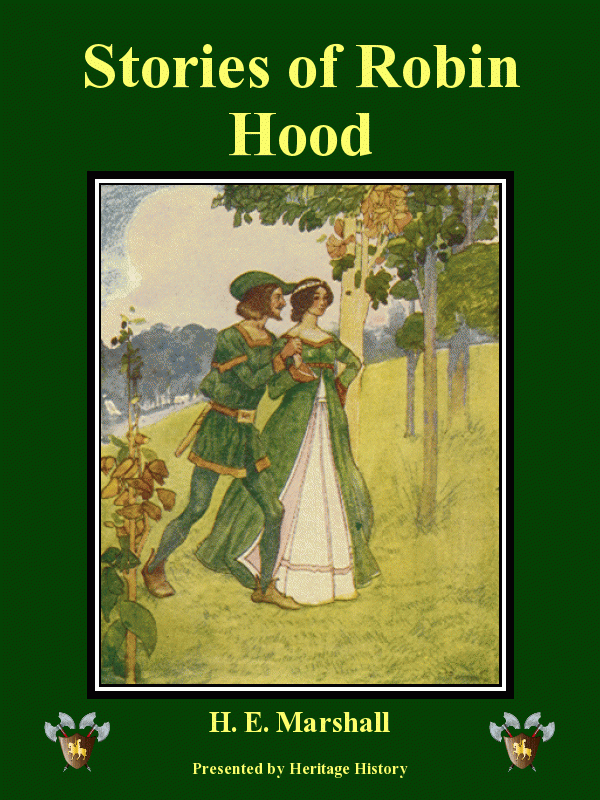 |
Stories of Robin Hood by H. E. Marshall
This lively retelling of the Stories of Robin Hood chronicles the events of the
time in which Robin Hood lived, while the heroic Richard the Lion-hearted was
absent from England and the kingdom was under the rule of his devious brother.
The story recounts how and why he came to live in the Greenwood, and the
adventures he had there with Little John, Maid Marian, and the Sheriff of
Nottingham in a manner attractive to youngsters. [38 sheets]
|
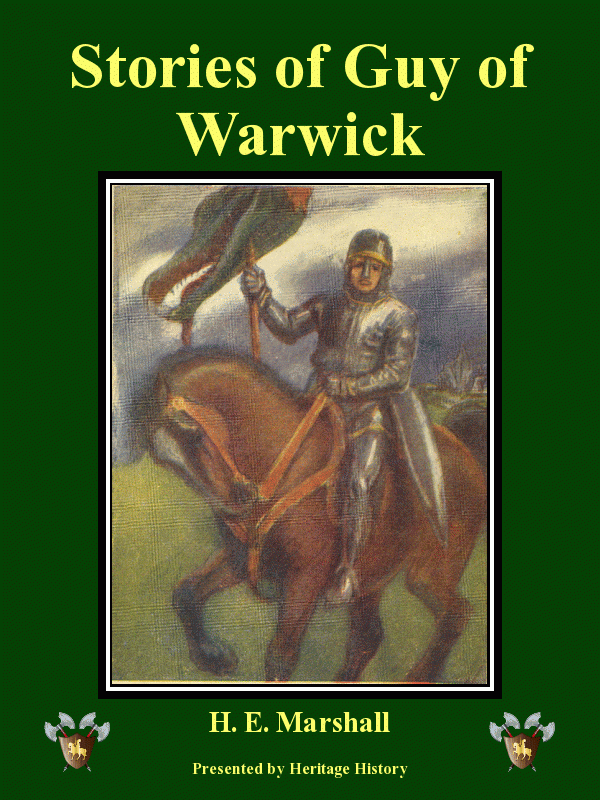 |
Stories of Guy of Warwick by H. E. Marshall
This story tells of the wondrous deeds of Guy of Warwick, a gallant knight of
old who falls in love with a noble lady and must prove his valor with deeds of
chivalry. Most of the stories of this illustrious knights of old England are
legendary, and feature monsters, giants and lions and well as villains of every
stripe. [31 sheets]
|
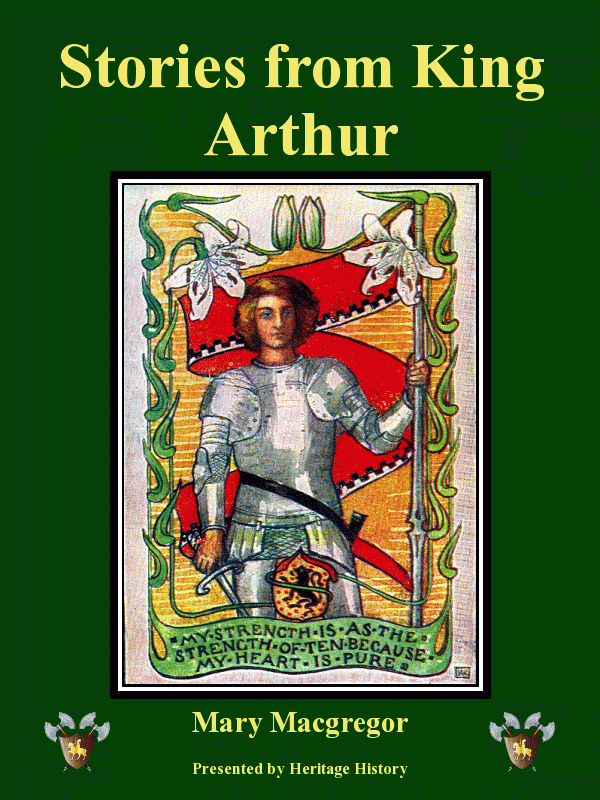 |
Stories from King Arthur's Knights by Mary Macgregor
This book tell six stories from the legends of King Arthur and his knights.
Most, however, involve the adventures of knights of the round table, are less
well known than the stories of Arthur himself. Four of the stories are love
stories between knights and their fair ladies: Geraint and Enid, Lancelot and
Elaine, Pelleas and Ettarde, and Gareth and Lynette. The final two stories
involve the great heroes, Sir Galahad and King Arthur. [36 sheets]
|
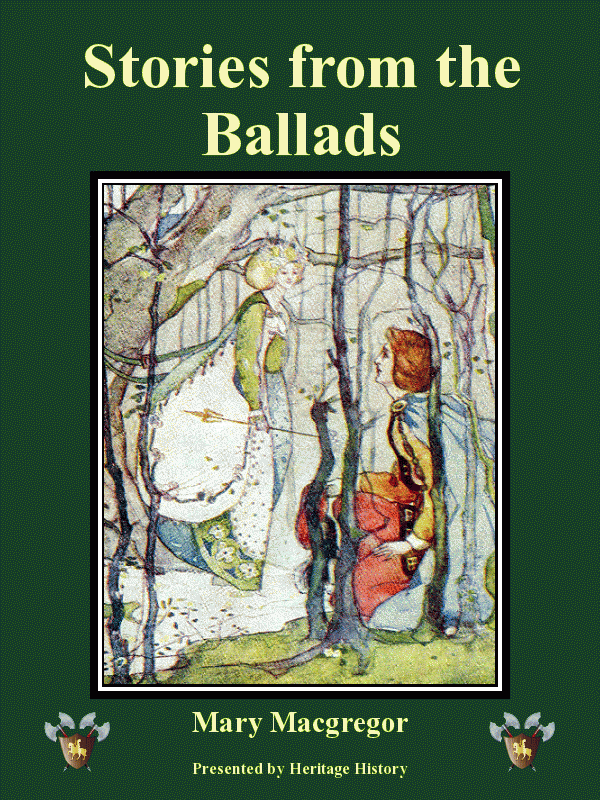 |
Stories from the Ballads by Mary Macgregor
These fairy tales from Scotland were derived from the ancient
Gaelic ballads. They include stories such as Tamlane, Lizzie Lindsay, Hynde
Etin, Hynde Hund, and others. [36 sheets]
|
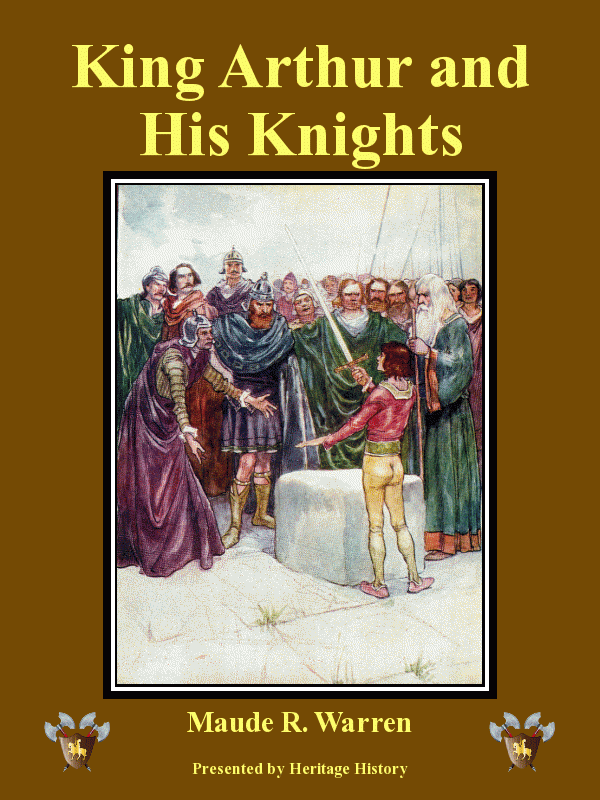 |
King Arthur and His Knights by Maude Radford Warren
Twenty-one stories from the Arthurian legends specially selected and adapted for
children and told in simple well-written prose. The stirring tales of these
chivalrous knights awaken the reader’s admiration for courage and gentleness and
high sense of honor essential in all ages. [78 sheets]
|
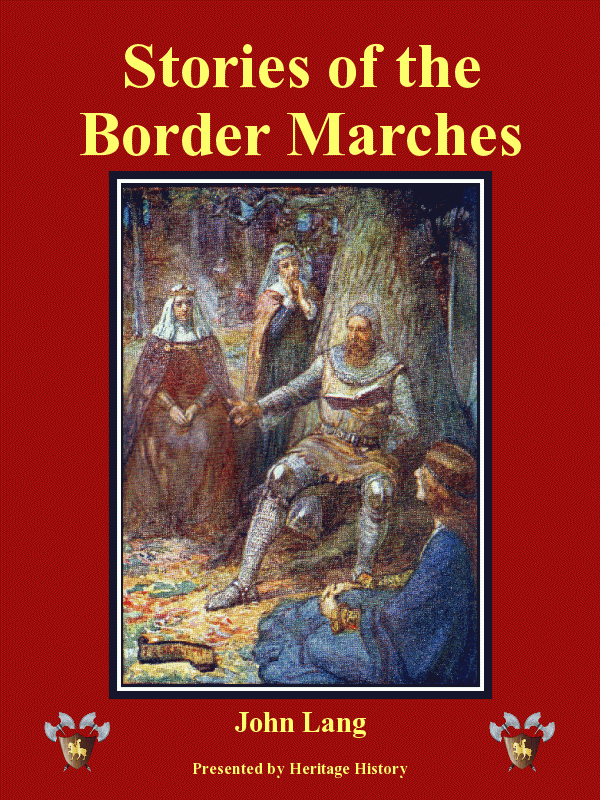 |
Stories of the Border Marches by John Lang
Marches refers to the region in Northern England near the Scottish
border. It was a rugged and violent area where hundreds of battles between
England and Scotland were fought over many centuries. Some of these Stories
from the Border Marches are historical in nature; some are purely legendary,
but all show the indomitable character of the rugged folk who dared to populate
that lovely, but violent region. [128 sheets]
|
Adapted Literature
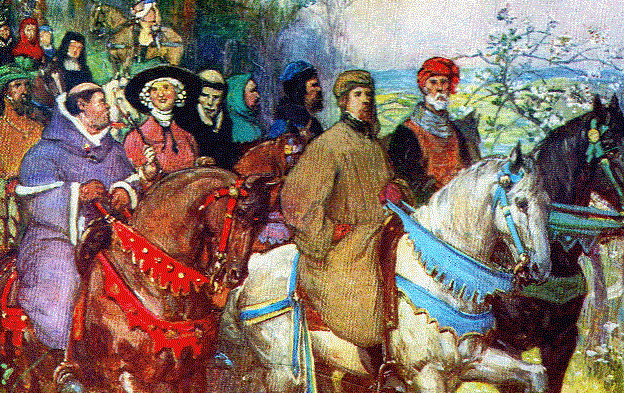
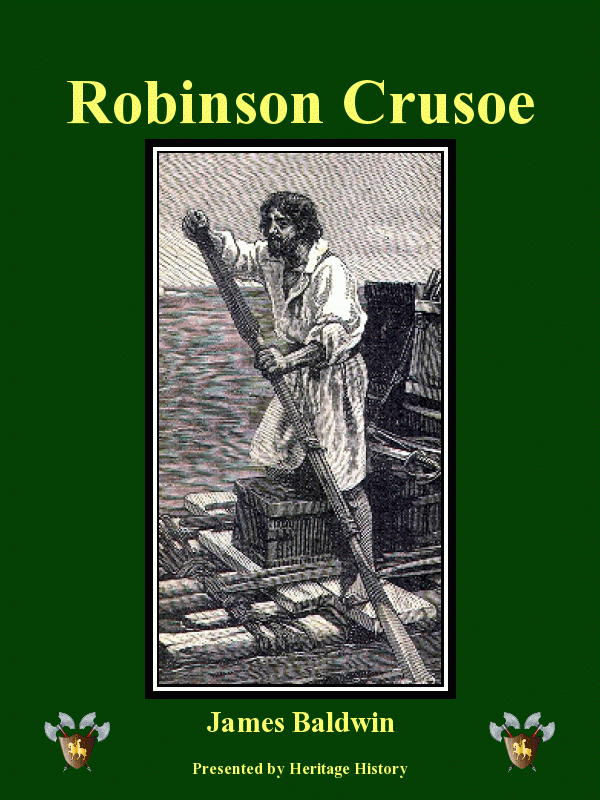 |
Robinson Crusoe told Anew by James Baldwin
This story of Robinson Crusoe for children was adapted to be easy to read for
young children. It Relates how the shipwrecked sailor makes a new life for
himself on the island, crafting shelter, food, and clothing for himself from the
few tools he rescued from the ship and what he is able to find on the island.
Living alone for over twenty years before he is finally rescued, he reinvents
almost everything necessary for daily sustenance. Even very young children
delight in this inspiring tale. [69 sheets]
|
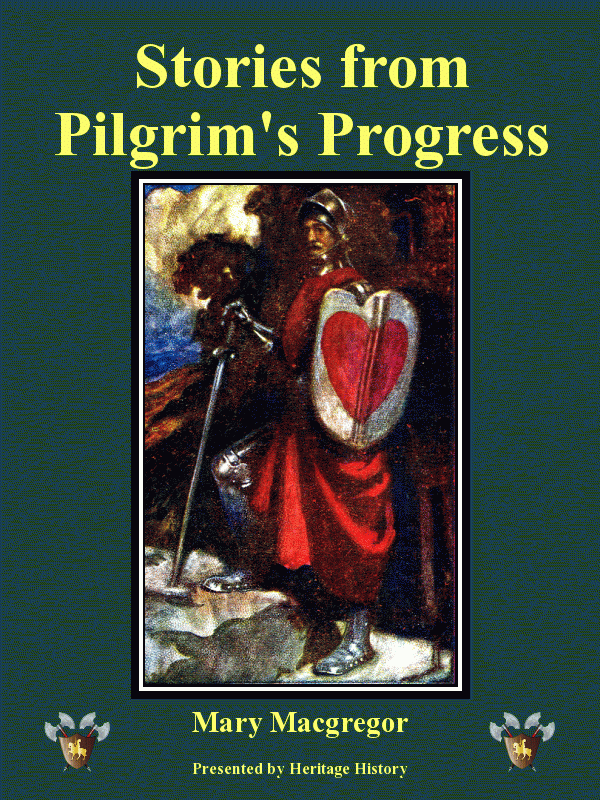 |
Stories from Pilgrim's Progress by Mary Macgregor
This version of Bunyan's Classic Christian allegory is adapted for young
children and is very effective as a short but entertaining morality tale. It
tells the story of a Christian pilgrim on his journey along the 'straight and
narrow' road. Along the route he encounters such characters as 'Obstinate',
'Pliable', 'Hopeful', and 'Goodwill', and passes the 'Slough of Despond' and
'Vanity Fair'. His is briefly imprisoned at 'Doubting Castle', the domicile of
'Giant Despair' before escaping and continuing on his journey to the 'celestial
city.' [37 sheets]
|
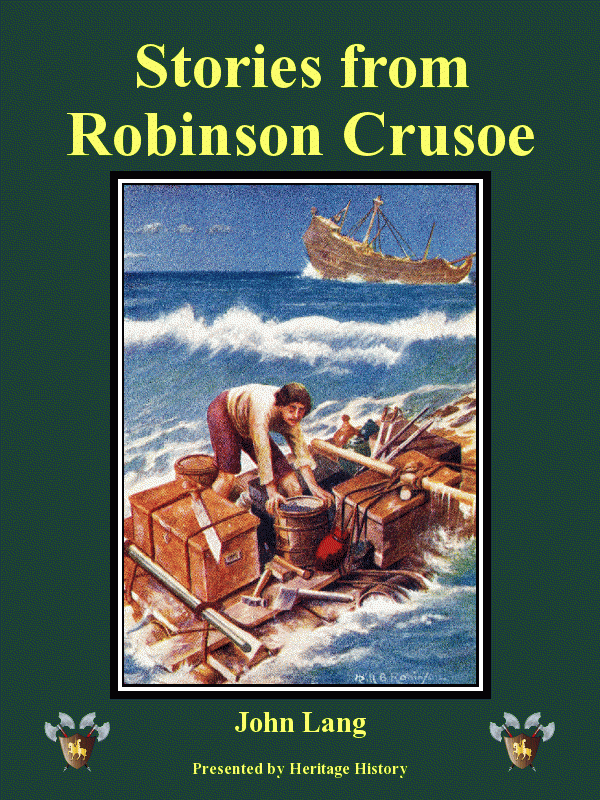 |
Stories from Robinson Crusoe by John Lang
The Story of Robinson Crusoe was one of the first widely read novels in the
English language, and it follows the adventures of an Englishman stranded
on a remote Island in the Caribbean for almost thirty years. The original
book is philosophical as well as an adventure story, but the underlying
story is of utmost interest, especially to imaginative boys. This rendition
is a very well done simplification suitable for grammar school age students. [37 sheets]
|
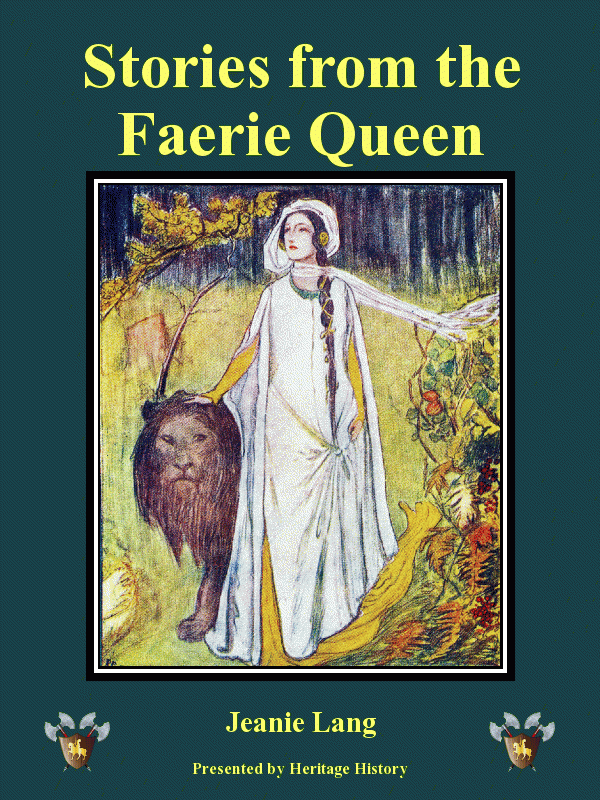 |
Stories from the Faerie Queen by Jeanie Lang
The Faerie Queen is one of the best known epic poems in the English language.
Written during the reign of Queen Elizabeth, it is allegorical in nature,
but from a child's point of view is merely an exceptionally romantic
collection of fairy stories—very appropriate for a simplified adaptation.
Queen Elizabeth is represented by the Faerie Queen, who rules over Fairy
land (England). The stories of the brave knights and beautiful maidens
that inhabit Fairly land are cleverly interlinked and often told from
more than one viewpoint. [42 sheets]
|
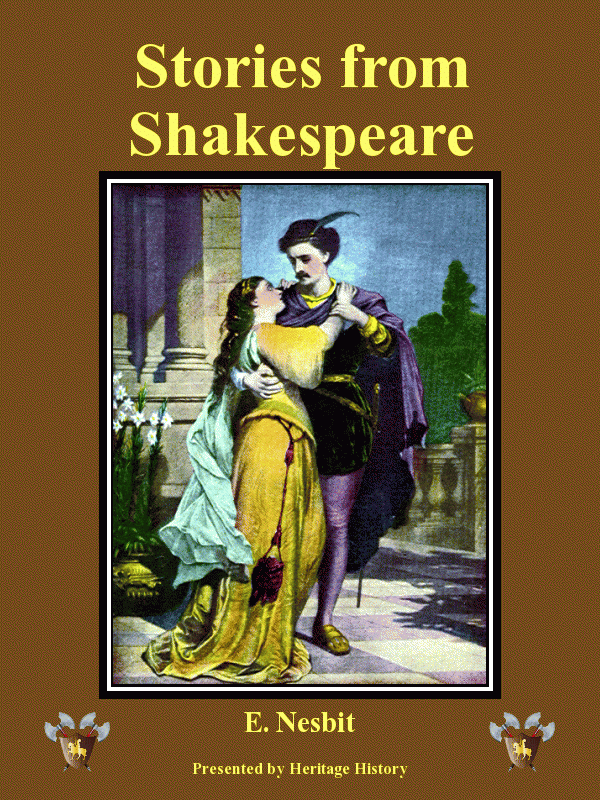 |
Beautiful Stories from Shakespeare by Edith Nesbit
Twenty stories from Shakespeare are retold in lively prose by a superlative
storyteller. The author makes Shakespeare's greatest plays accessible to young
children by relating the stories that form the core of the plays. Her graceful,
vivid retellings are the perfect introduction to Shakespeare's works. The plays
included in Nesbit's collection include Shakespeare's most famous comedies and
tragedies but few of his historical works. [83 sheets]
|
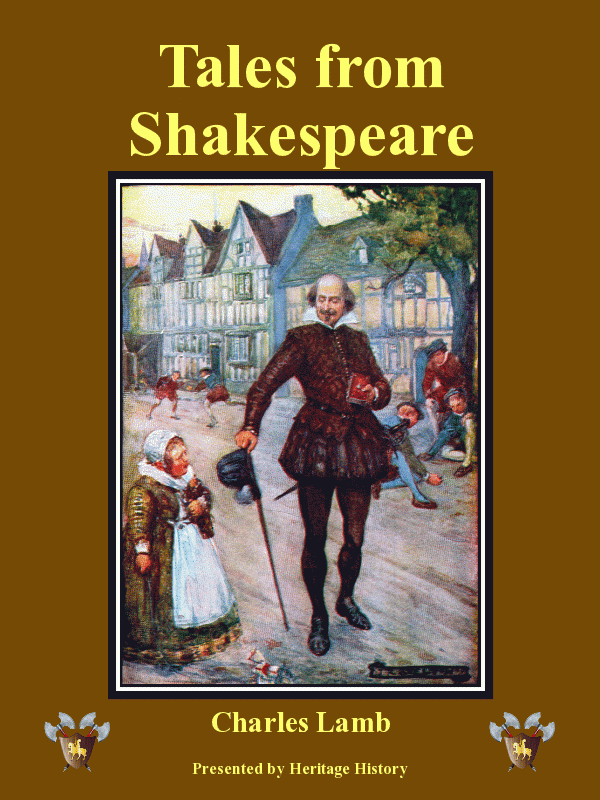 |
Tales from Shakespeare by Charles Lamb
First published in 1807, these simple retellings of the plots of Shakespeare's
plays have delighted generations of children, while serving as an excellent
introduction to the dramas of our greatest playwright. Shakespeare's own
language is used as much as possible to accustom children to the English of the
Elizabethan age and so make easier their transition to the reading of the plays
themselves. Numerous black and white illustrations by Louis Rhead complement the
text. [176 sheets]
|
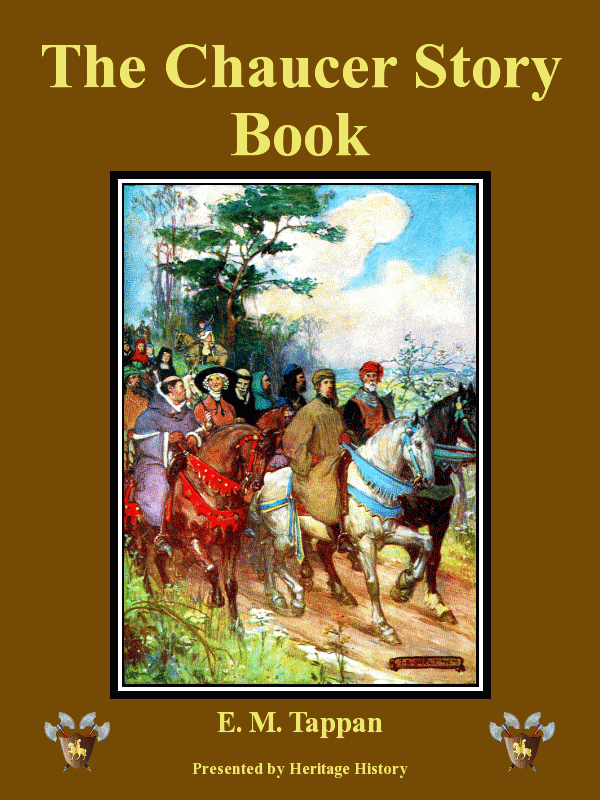 |
The Chaucer Story Book by Eva March Tappan
This is a charming retelling of Chaucer's Canterbury Tales, complete with an
introduction to the interesting characters who meet on a pilgrimage to the tomb
of Thomas a Becket, and tell each other tales to pass the time. Some of the
well-known tales include the story of Chanticleer the Rooster, Patient Griselda,
The Story of the Summoner and the Tale of the Wife of Bath, as well as many
other. [59 sheets]
|
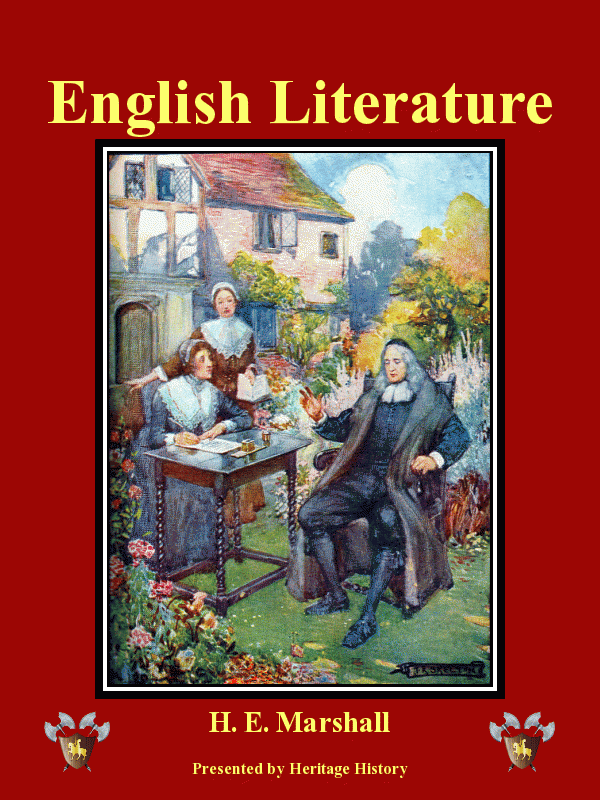 |
English Literature by H. E. Marshall
A terrific and accessible introduction to English literature by one of Britain's
greatest authors of Juvenile History. All of the major authors and literature of
England are covered, from the Celtic ballads to the nineteenth century greats
such as Dickens and Thackeray. Short examples of most of the literature is
included, also with fascinating biographies. [329 sheets]
|
Historical Fiction
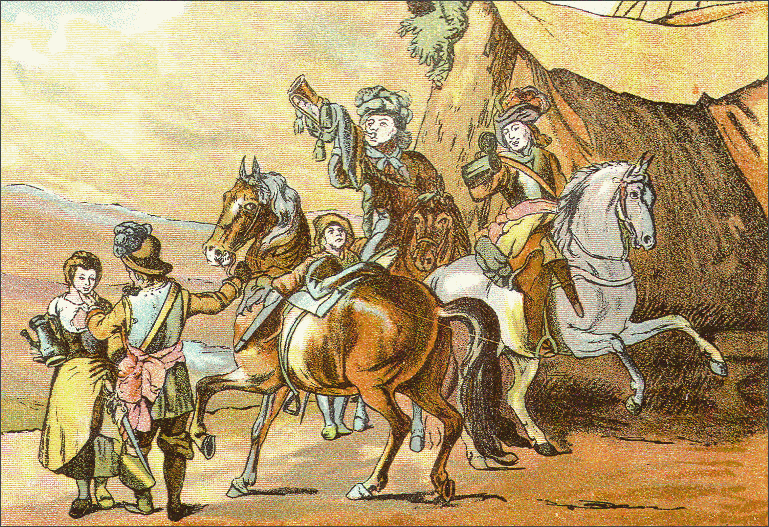
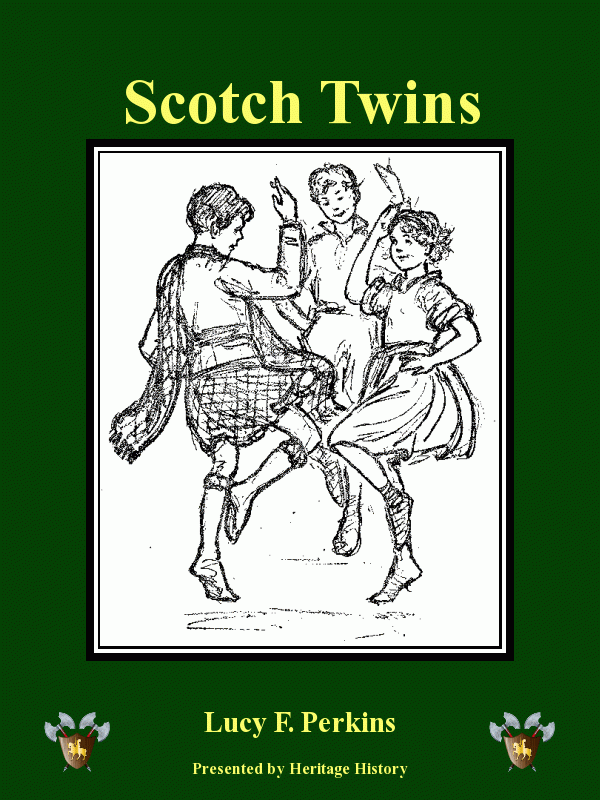 |
The Scotch Twins by Lucy Fitch Perkins
Jean and Jock Campbell are 12 year-old twins who live in the highlands of
Scotland near the turn of the century. After helping out on their parents farm,
cleaning the house, tending the rabbits, and observing the Sabbath, the twins
befriend a new neighbor. Their adventures with their new friend involves
poachers, game-keepers and the death of the Auld Laird. [57 sheets]
|
 |
Our Little Saxon Cousin from Long Ago by Julia Darrow Cowles
This book tells the story of a Saxon boy name Turgar who lived at the during the
age of Alfred the Great. He was educated at Crowland abbey and was present
during its sacking by the Danes. The story tells the details of his life at the
abbey and shows how the monasteries were an important part of mediaeval life.
After many adventures, Turgar joins the army of Alfred the Great to help keep
Britain safe from the Danish invaders. [57 sheets]
|
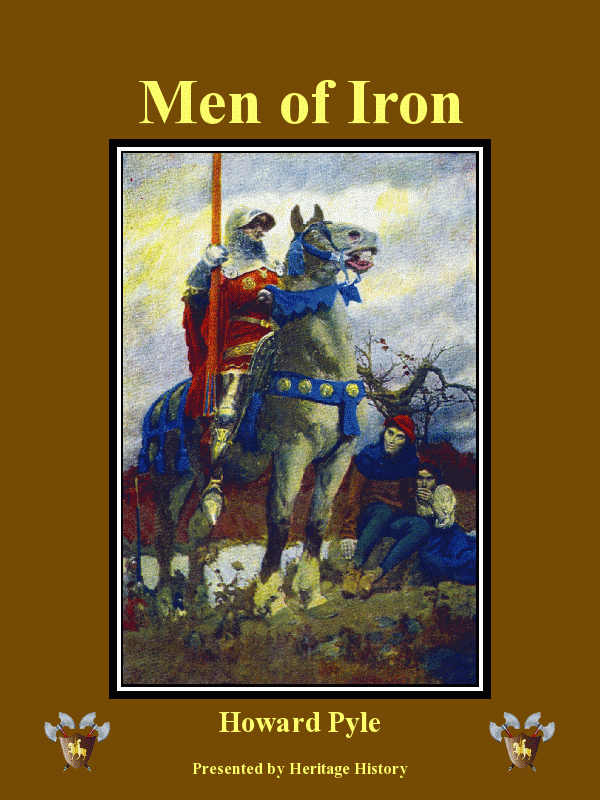 |
Men of Iron by Howard Pyle
This classic tells the story of the coming of age of a young squire, living in
England at the turn of the 15th century. The action starts just a few months
after the treacherous Richard II was deposed, and replaced on the throne by his
cousin, Henry IV. Myles Falworth was the son of one of the counselors of Richard
II, and his youth and coming of age is much influenced by the accompanying
palace politics. [119 sheets]
|
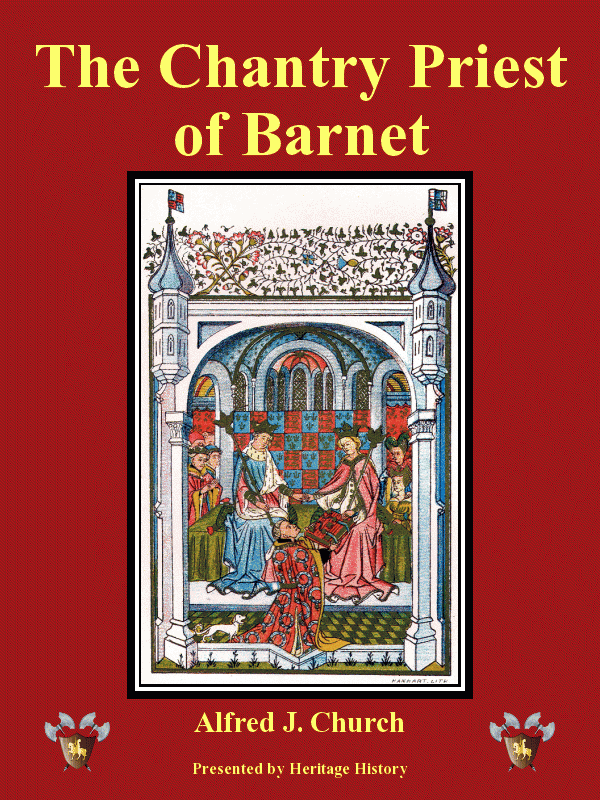 |
The Chantry Priest of Barnet by Alfred J. Church
This story takes place during the War of the Roses, but it does not give a
comprehensive overview of the war and a prior knowledge of the history of the
conflict is helpful in following the plot. The story is told by a young monk who
happens to be present at several of the important battles. Many details are
given concerning abbey life in England shortly before the monasteries were
dissolved during the English Reformation. [89 sheets]
|
 |
With the King at Oxford by Alfred J. Church
This story follows the life of an English gentleman who enlists with the
cavaliers during the English Civil War. Between battles he returns to Oxford to
complete his studies, but the disruptions of the war wreak havoc on all normal
vocations. In addition to learning some details about English life in the
seventeenth century and the early conflict between the king and parliament, a
great deal of history specific to Oxford University is also covered. [86 sheets]
|
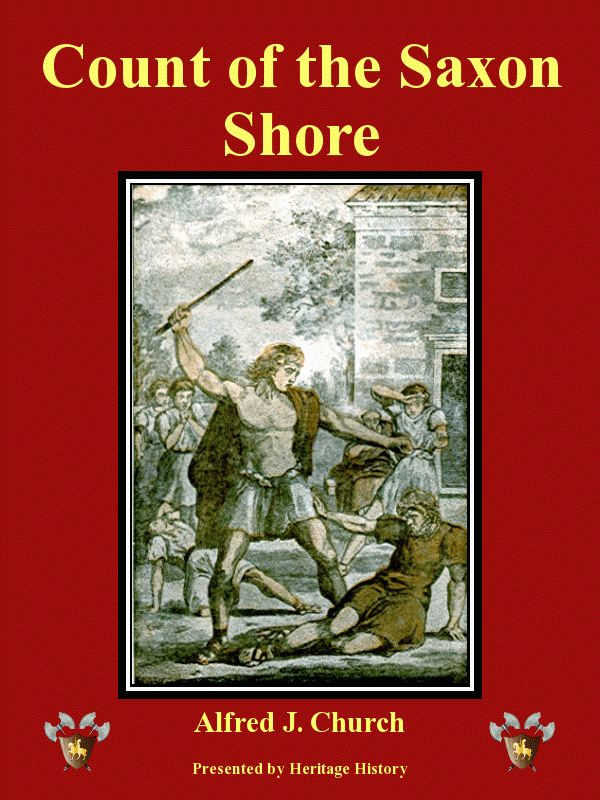 |
The Count of the Saxon Shore by Alfred J. Church
The hero of this book is a Roman-British naval commander in charge of keeping
pirates away from the British Isles near the turn of the fourth century. During
his watch, the empire is beginning its final collapse. The legionnaires leave
Britain, the provinces are left to govern themselves, and eventually he is told
to abandon his post. From that point the Celtic Britons are left alone to battle
the Scottish Picts and Saxon invaders by themselves. [108 sheets]
|
European Middle Ages
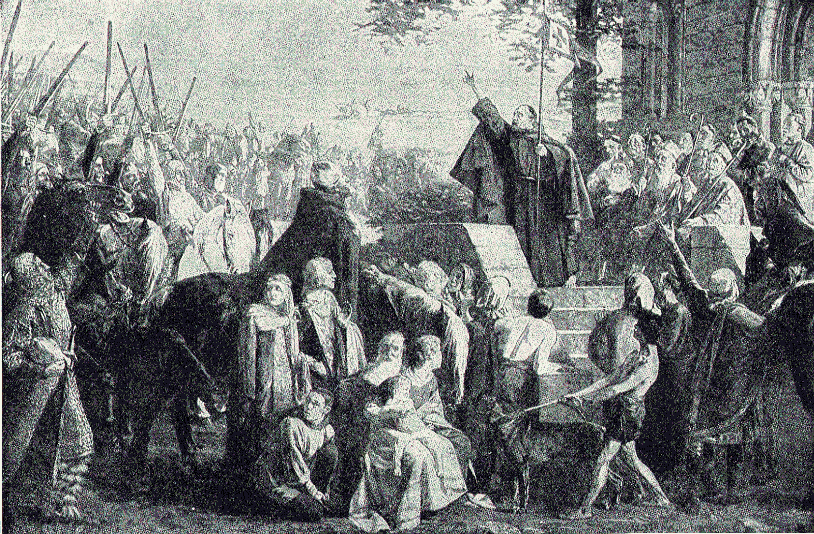
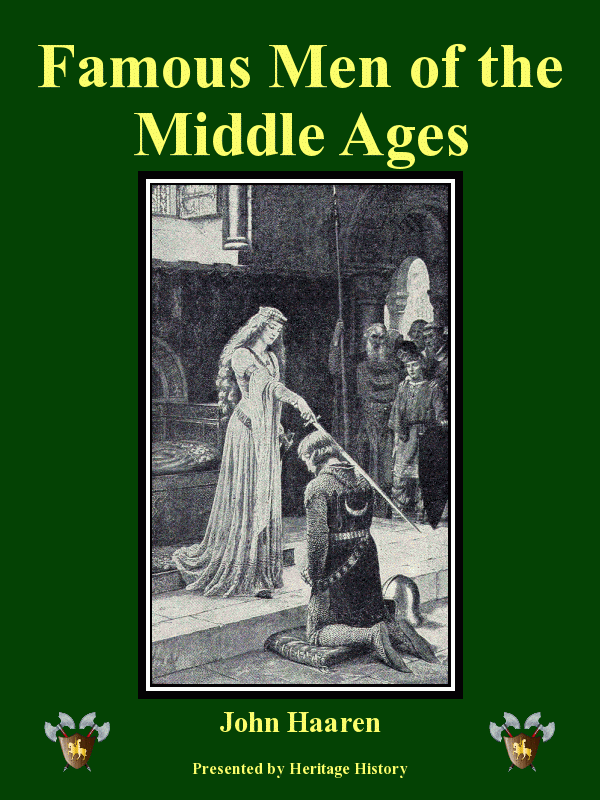 |
Famous Men of the Middle Ages by Haaren and Poland
Attractive biographical sketches of thirty-five of the most prominent characters
in the history of the Middle Ages, from the barbarian invasions to the invention
of the printing press. Subjects include Rollo the Viking, Henry the Fowler,
Canute the Great, Peter the Hermit, Marco Polo, and many more. Each story is
told in a clear, simple manner, and is well calculated to awaken and stimulate
the youthful imagination. [98 sheets]
|
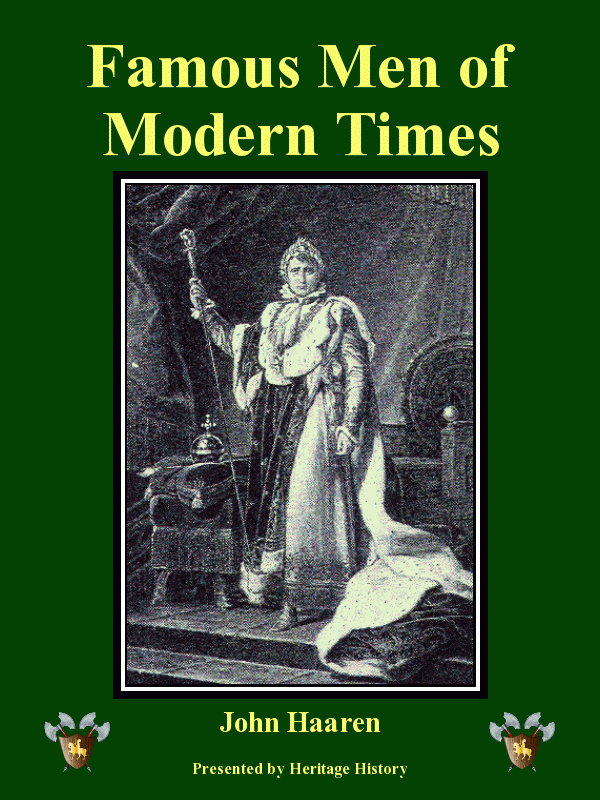 |
Famous Men of Modern Times by Haaren and Poland
Biographical sketches of thirty-three of the most famous characters from the age
of the Renaissance in Europe to the late nineteenth century. Included are
well-known greats such as Charles V, Solyman the Magnificent, Drake, Raleigh,
Richelieu, Louis XIV, Newton, Peter the Great, Washington, Pitt, and Napoleon as
well as many others. [119 sheets]
|
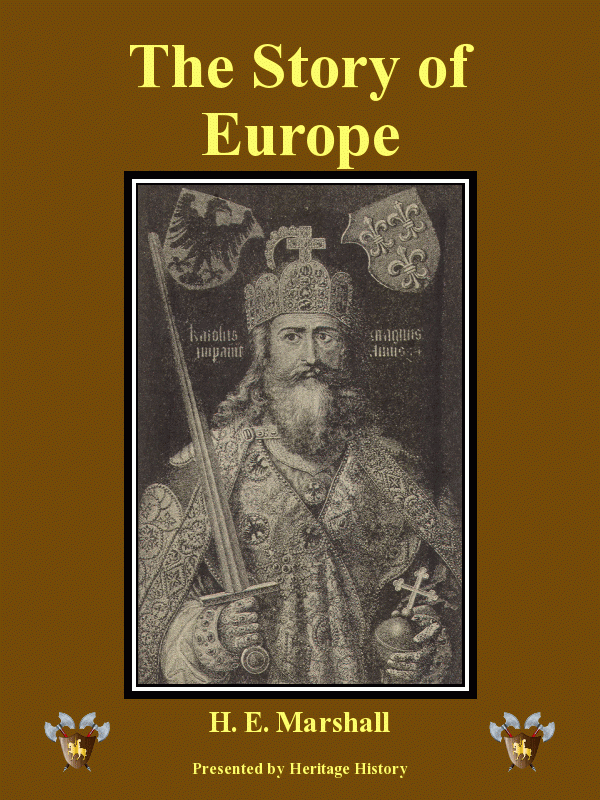 |
The Story of Europe by H. E. Marshall
This book presents the broader movements of European history, emphasizing the
main factors which have gone into the development of the various European states
from the fall of the Roman Empire to the Reformation. The history of England is
included only when that country plays a prominent part in the politics of
Europe. A full treatment of the period immediately following the fall of the
Roman Empire is given, since that period provides the necessary key to future
developments. Maps, timelines, and genealogy charts of the various royal houses
of Europe contribute to making this book an excellent resource for the study of
the Middle Ages in Europe. [108 Sheets]
|
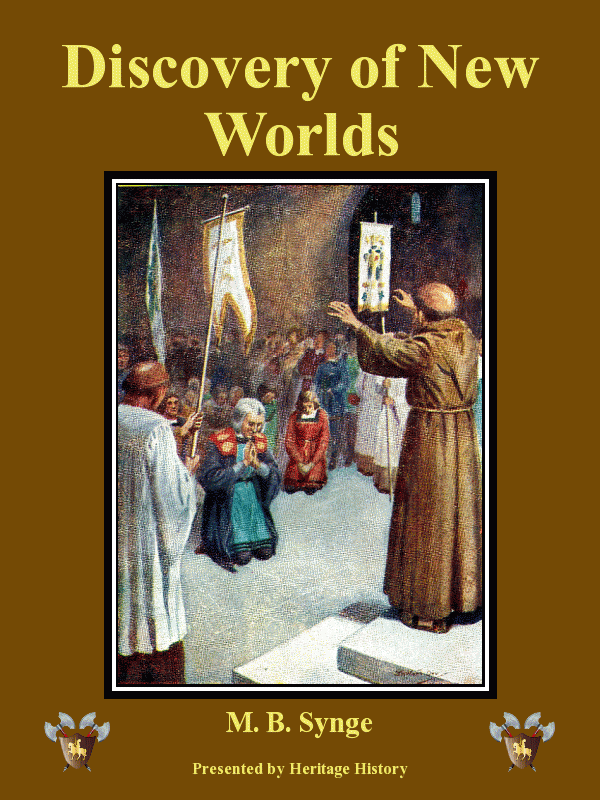 |
The Discovery of New Worlds by M. B. Synge
Book II of the Story of the World series covers the rise and fall of the Roman
Empire, the conversion of the Germanic tribes of Europe to Christianity, the
rise of Islam in the east, the European Middle Ages, the Crusades, and finally
the age of exploration. The book concludes with the discoveries of Columbus and
the Spanish settlements in the New World. [85 sheets]
|
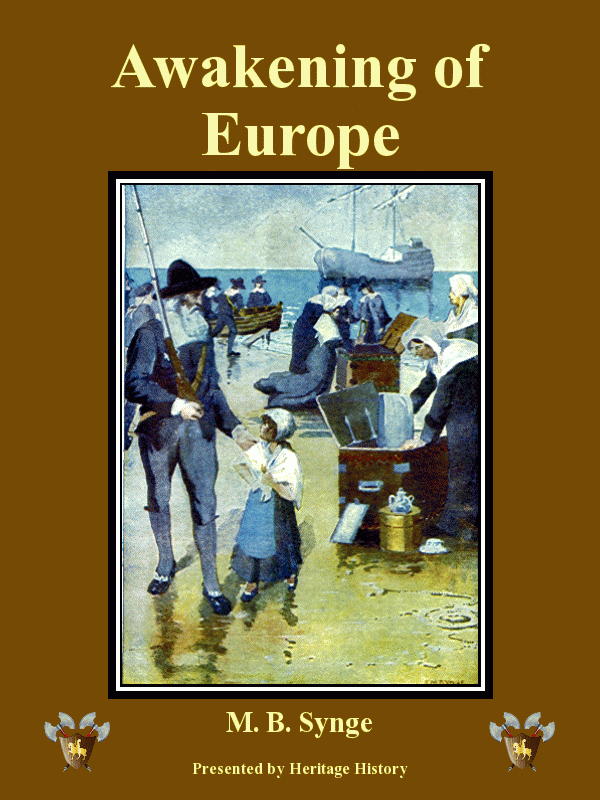 |
The Awakening of Europe by M. B. Synge
Book III of the Story of the World series covers the reformation in Germany, the
Netherlands, France, and England, as well as the settlement of colonies in
America. Special attention is given to the rise of England and the Netherlands
as sea powers, and the corresponding fall of Spain. The rise of Russia, Prussia,
and Austria in the 17th and 18th centuries is also presented. [90 sheets]
|
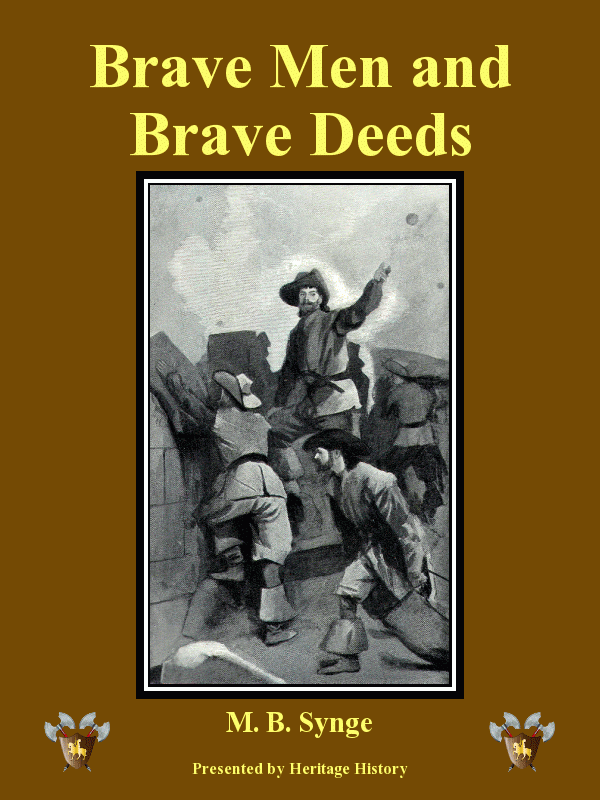 |
Brave Men and Brave Deeds by M. B. Synge
This book is a collection of particularly interesting vignettes from European
history. Each of the seventeen stories is told in enough detail to be of great
interests, and a variety of the most important incidents of European History or
covered. Among them include the fall of Granada in Spain, the siege of Leyden
during the Netherlands' War of Independence, the relief of Vienna by Sobieski,
the flight of the monarchs during the French revolution, the defense of
Missolonghi during the Greek war of Independence, and Garibaldi's Sicilian
Campaign. [107 sheets]
|
Copyright © Heritage History 2012
All rights reserved
|











